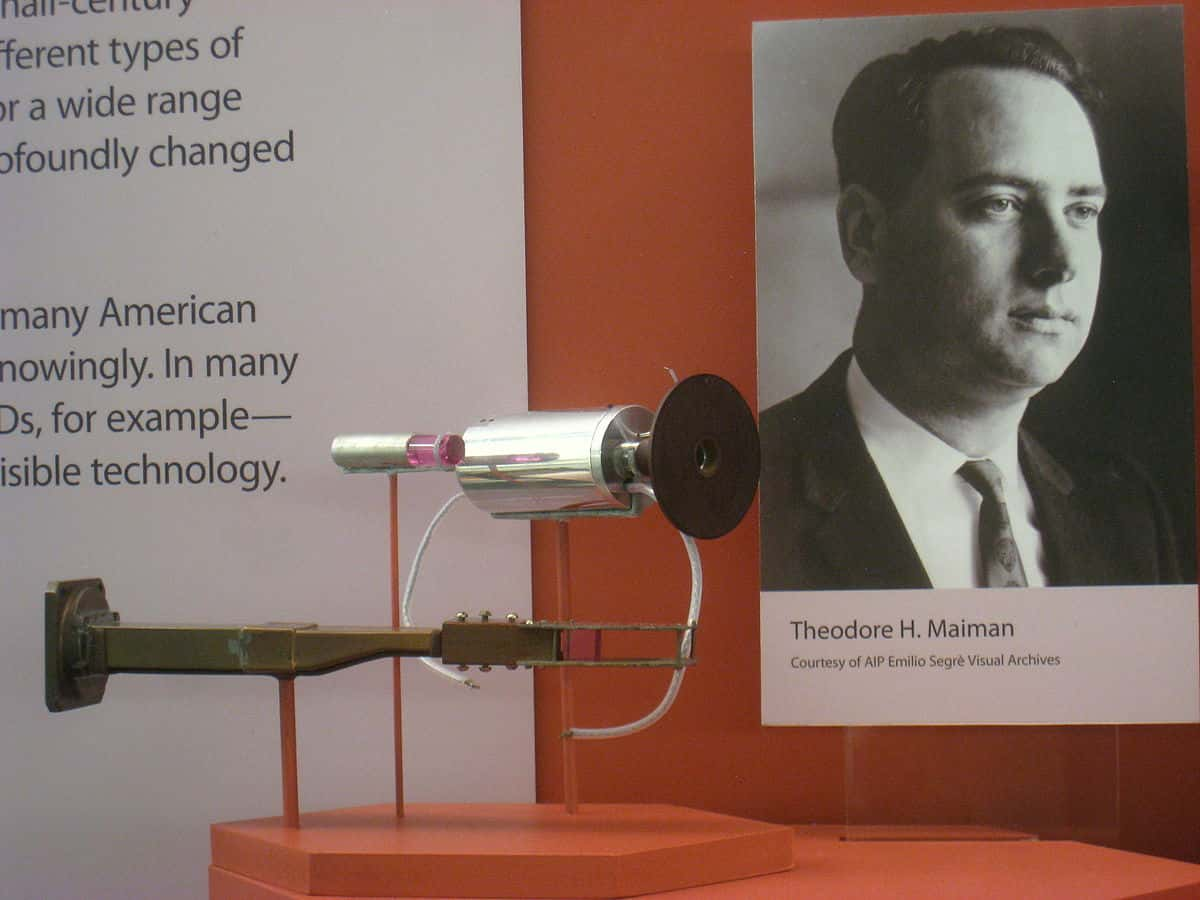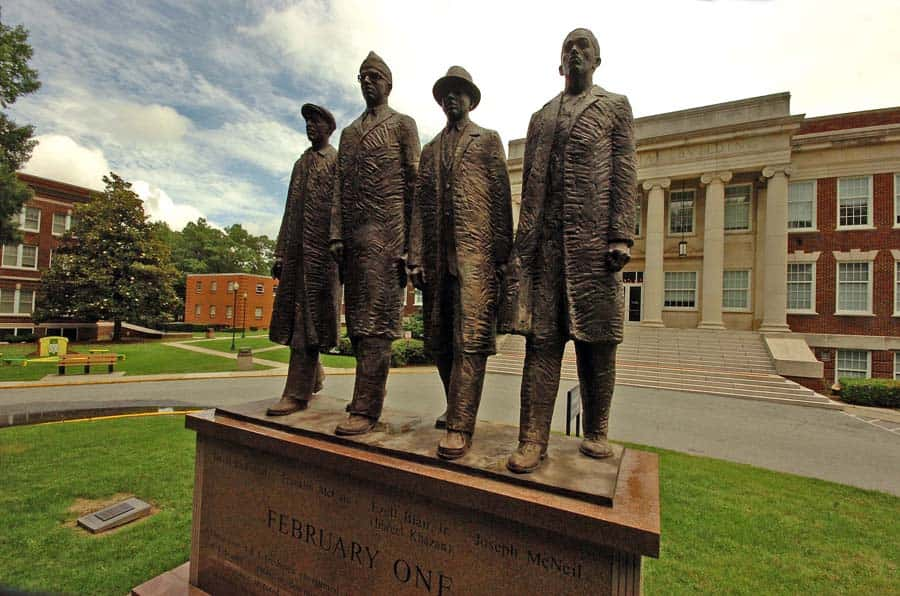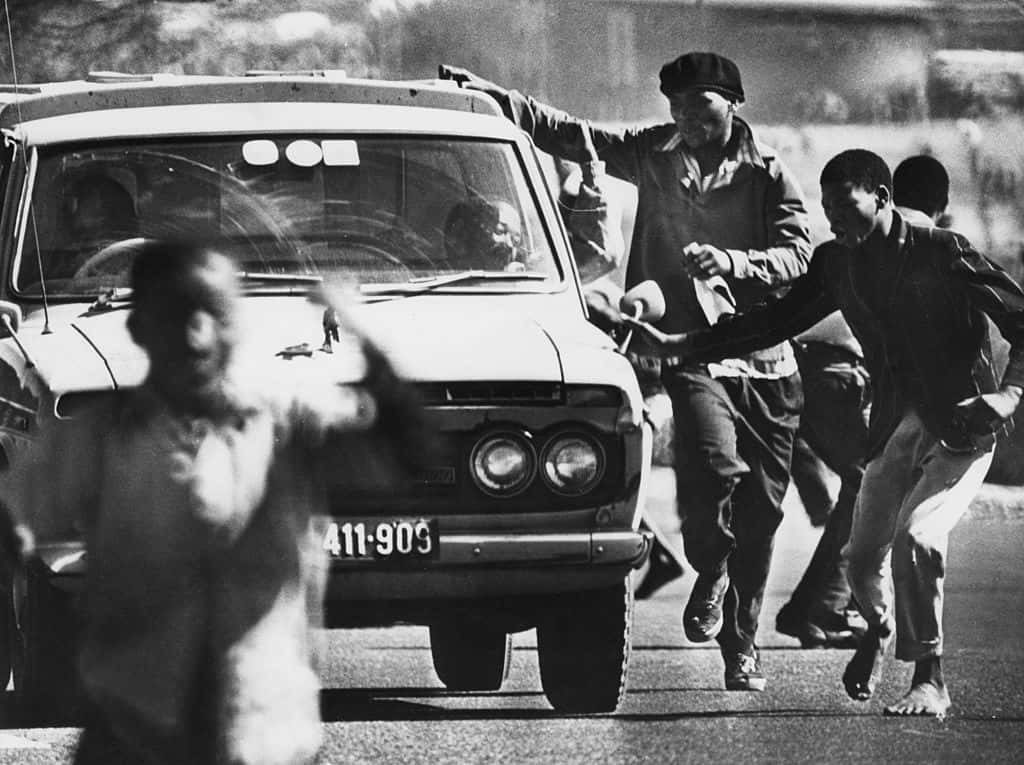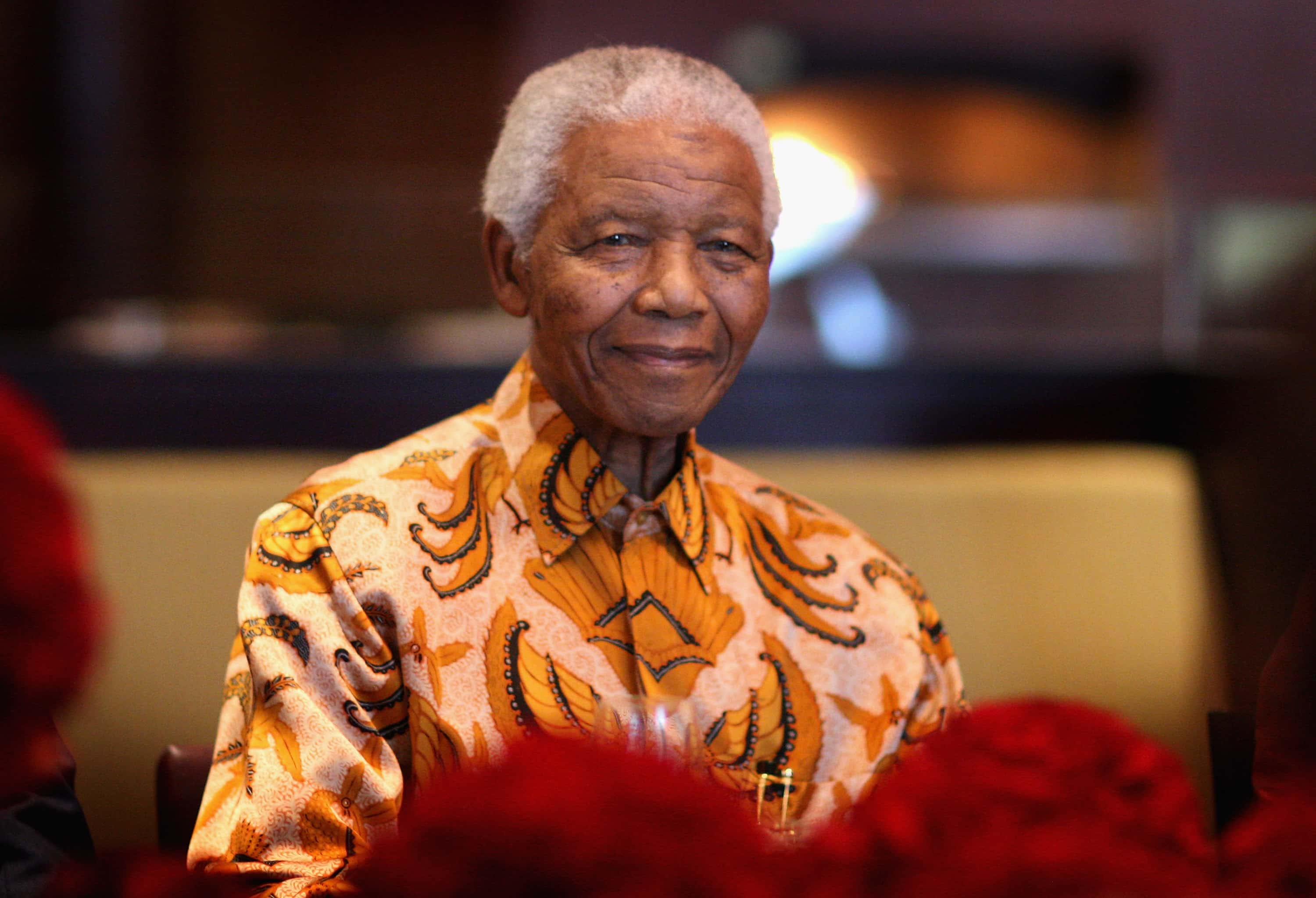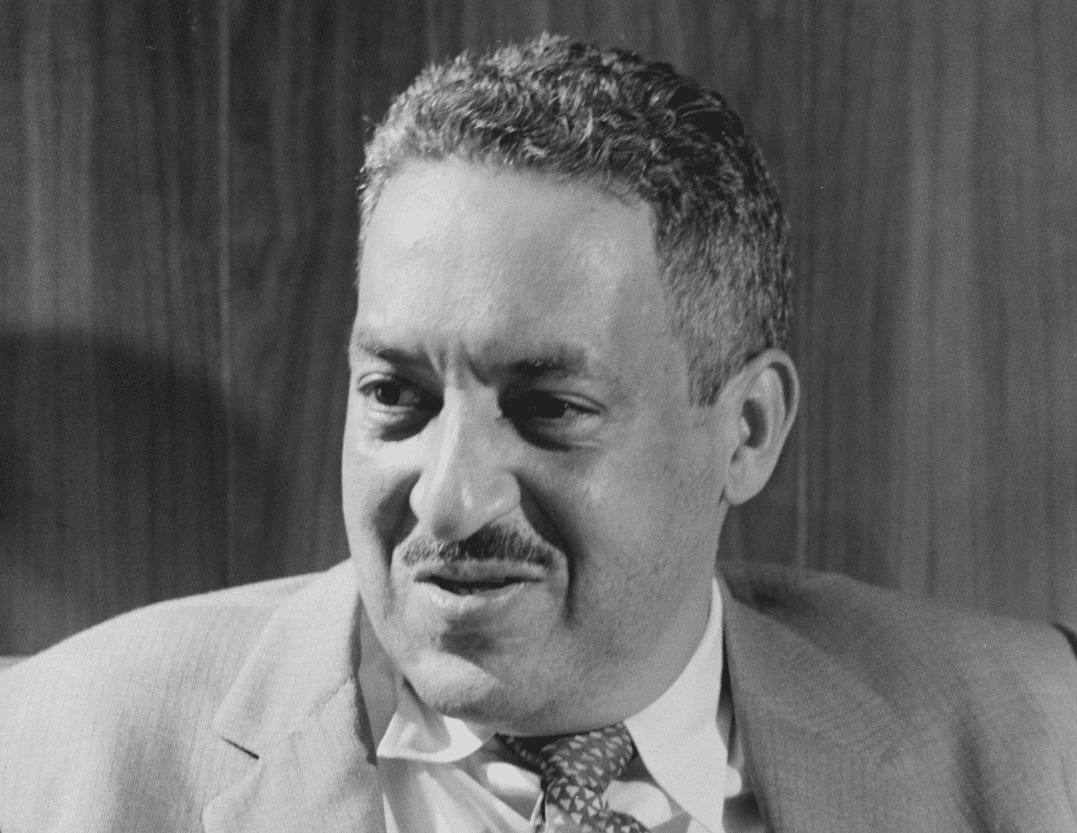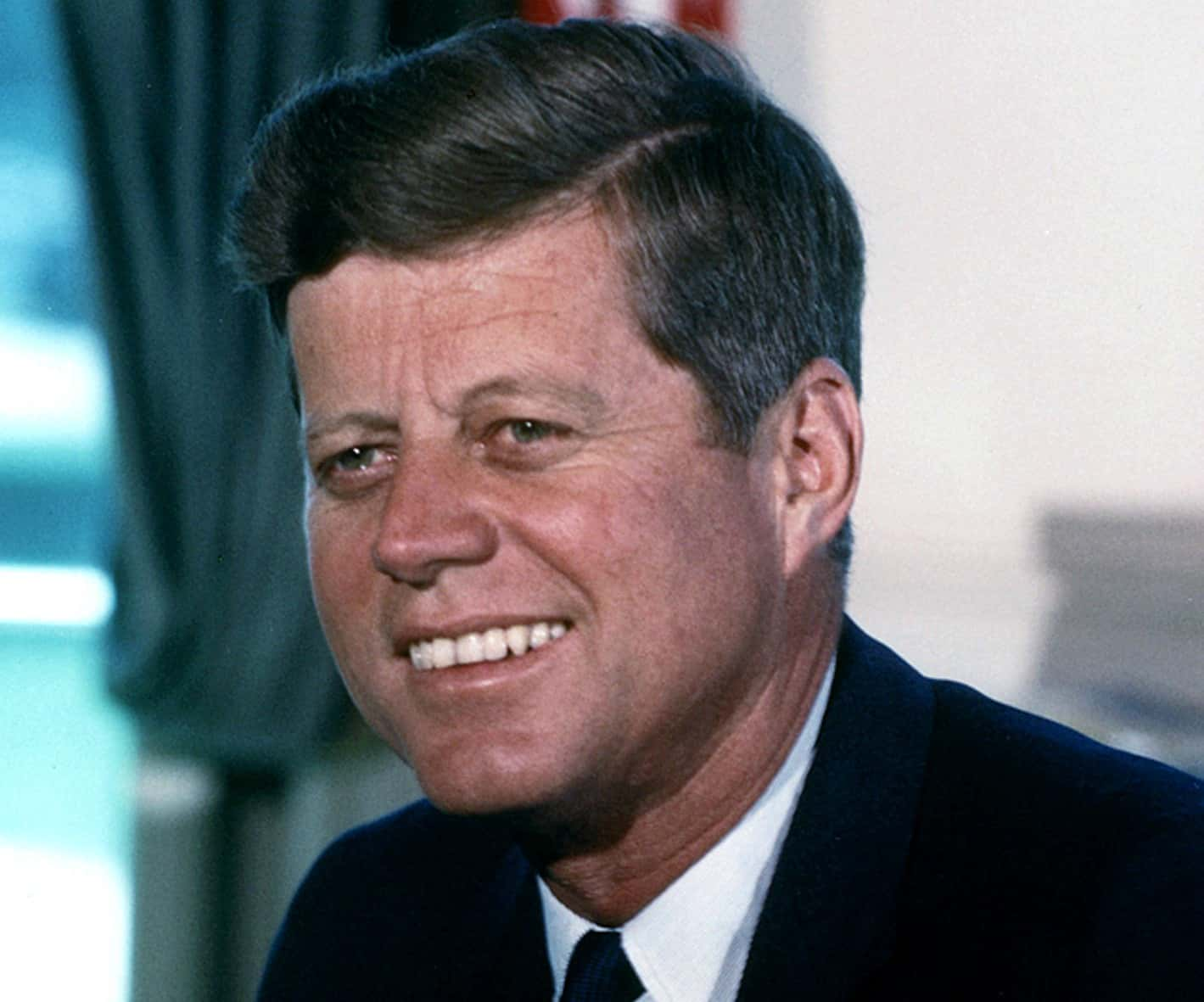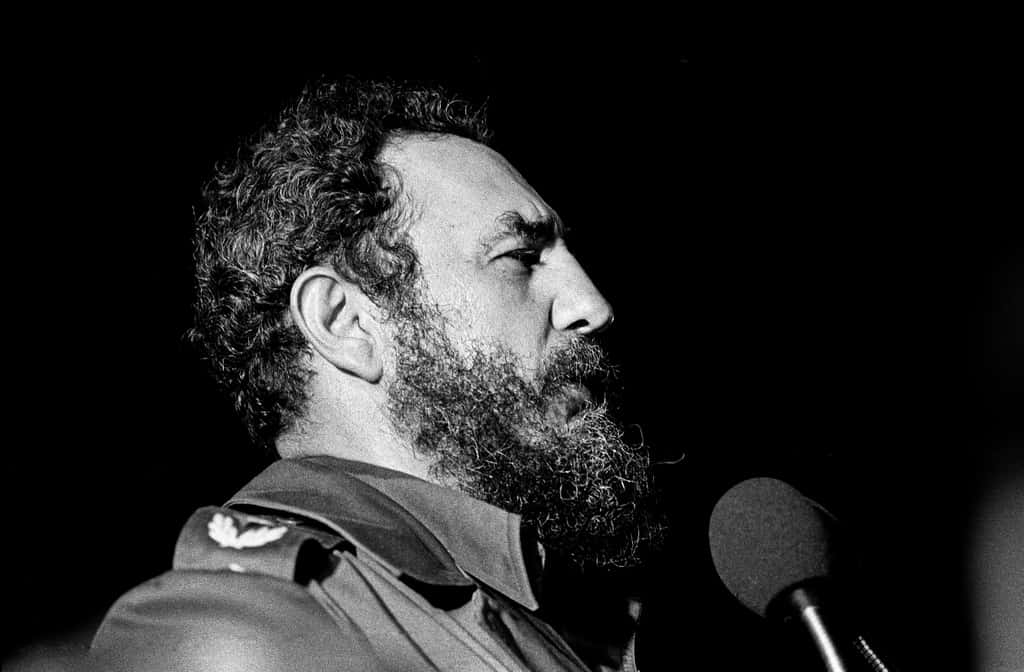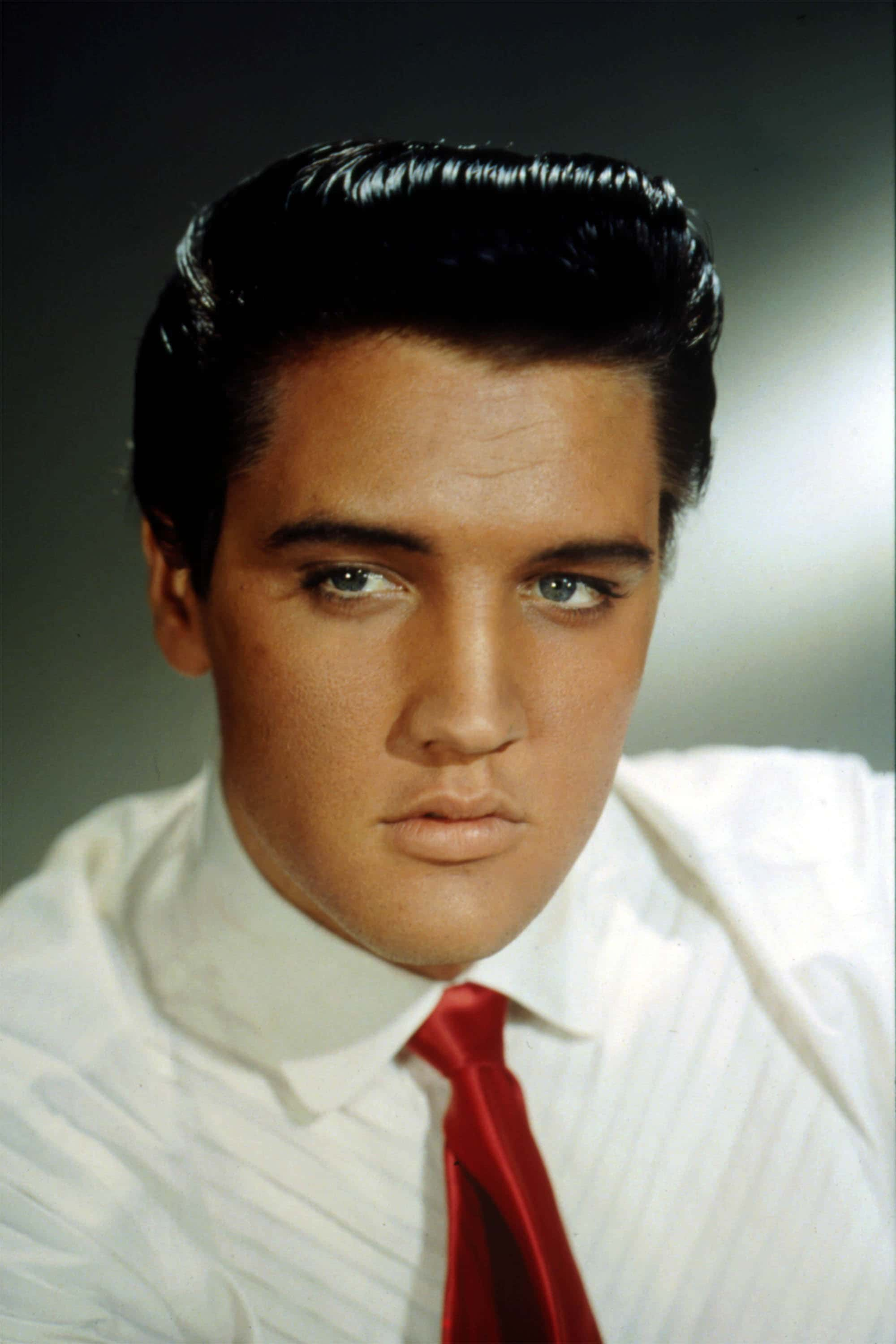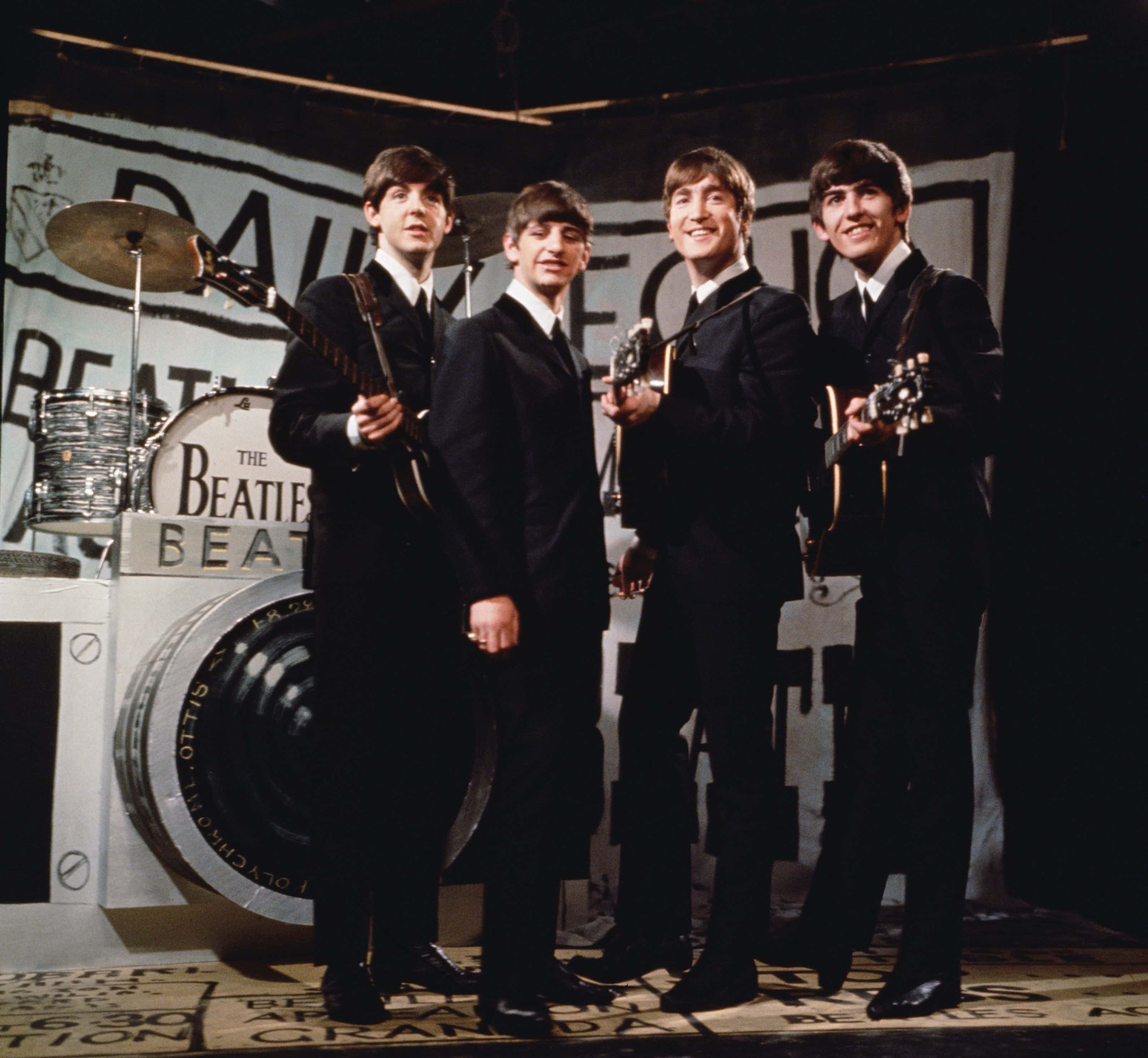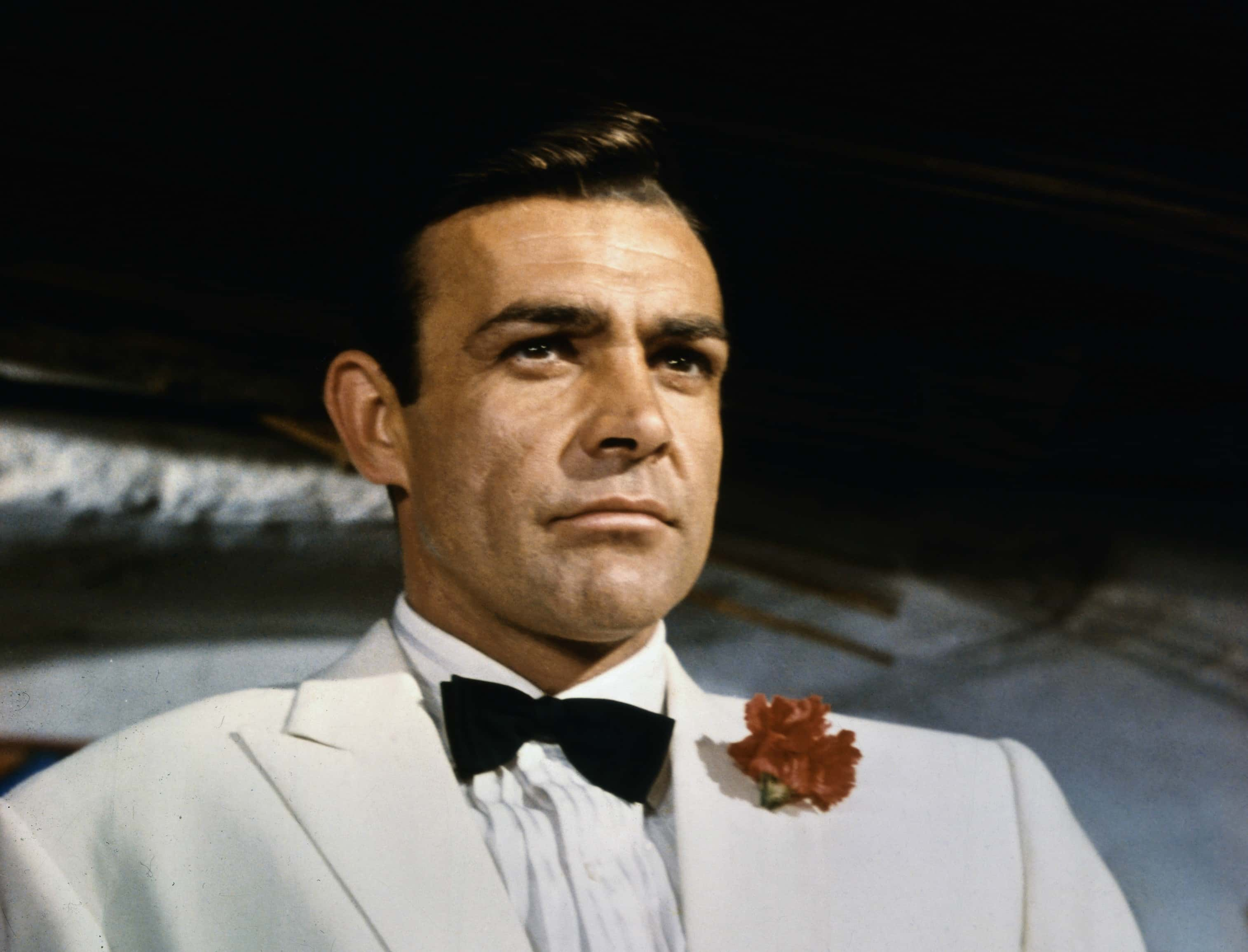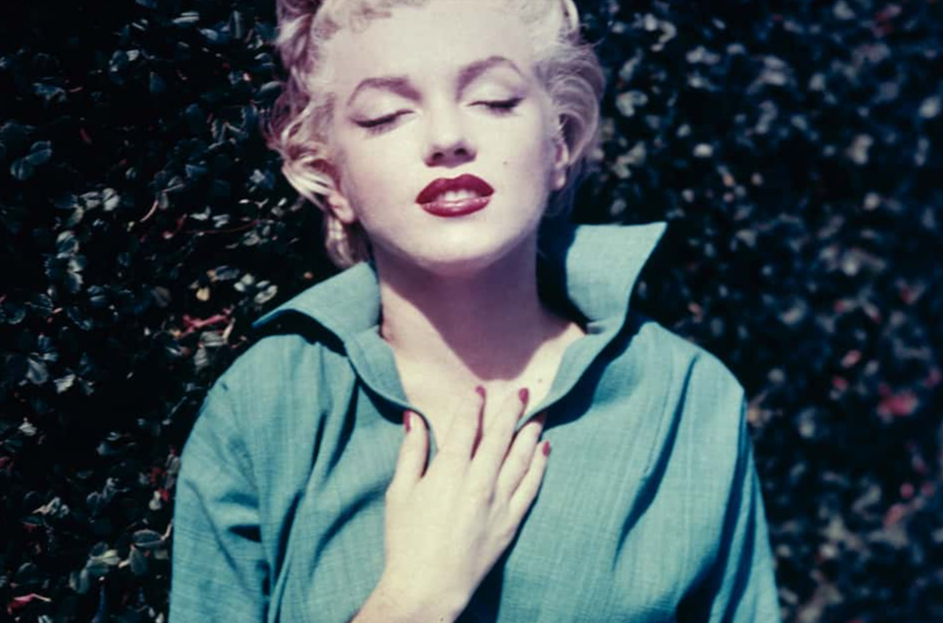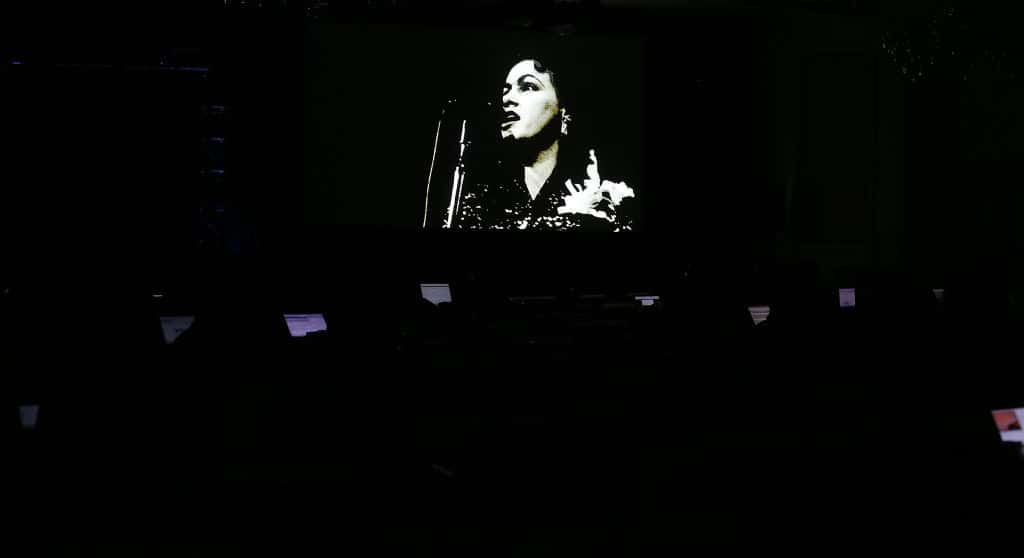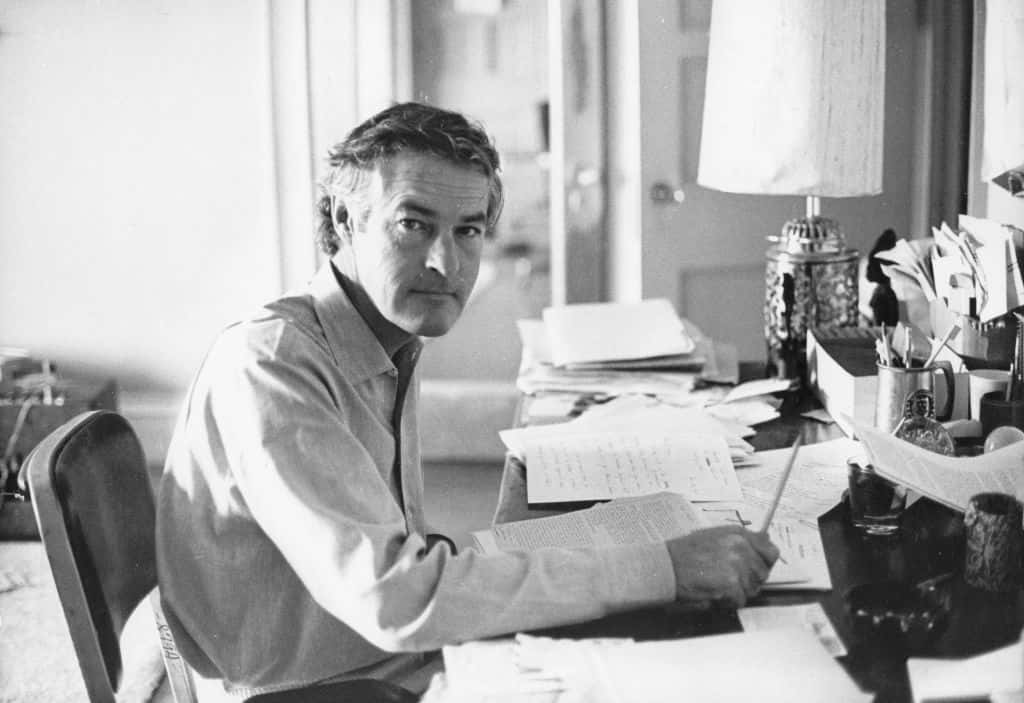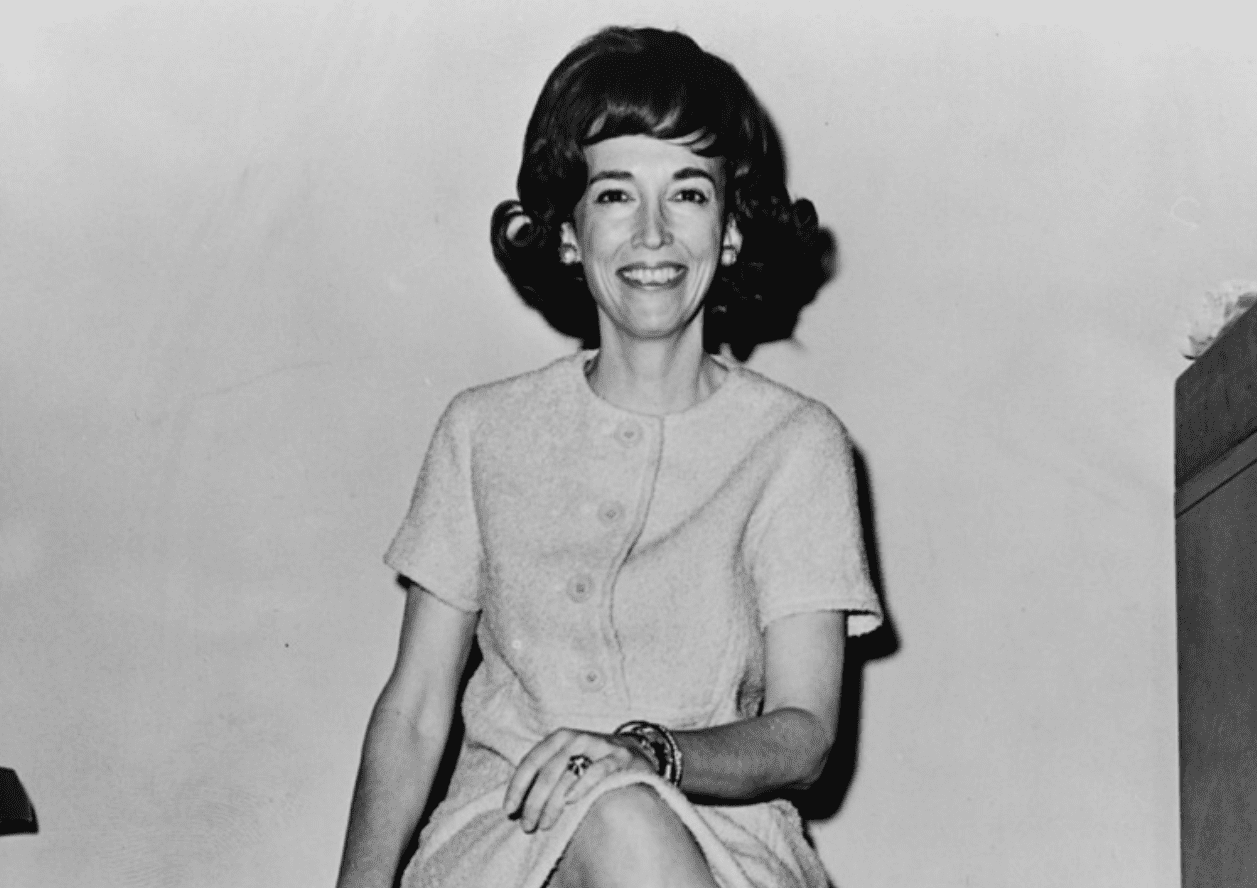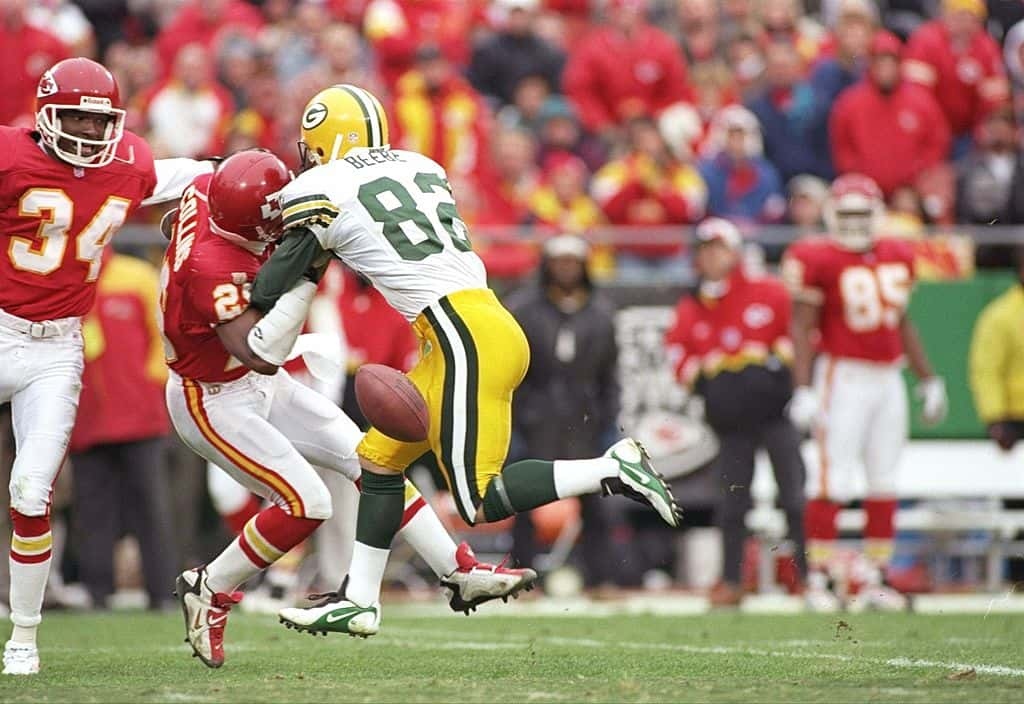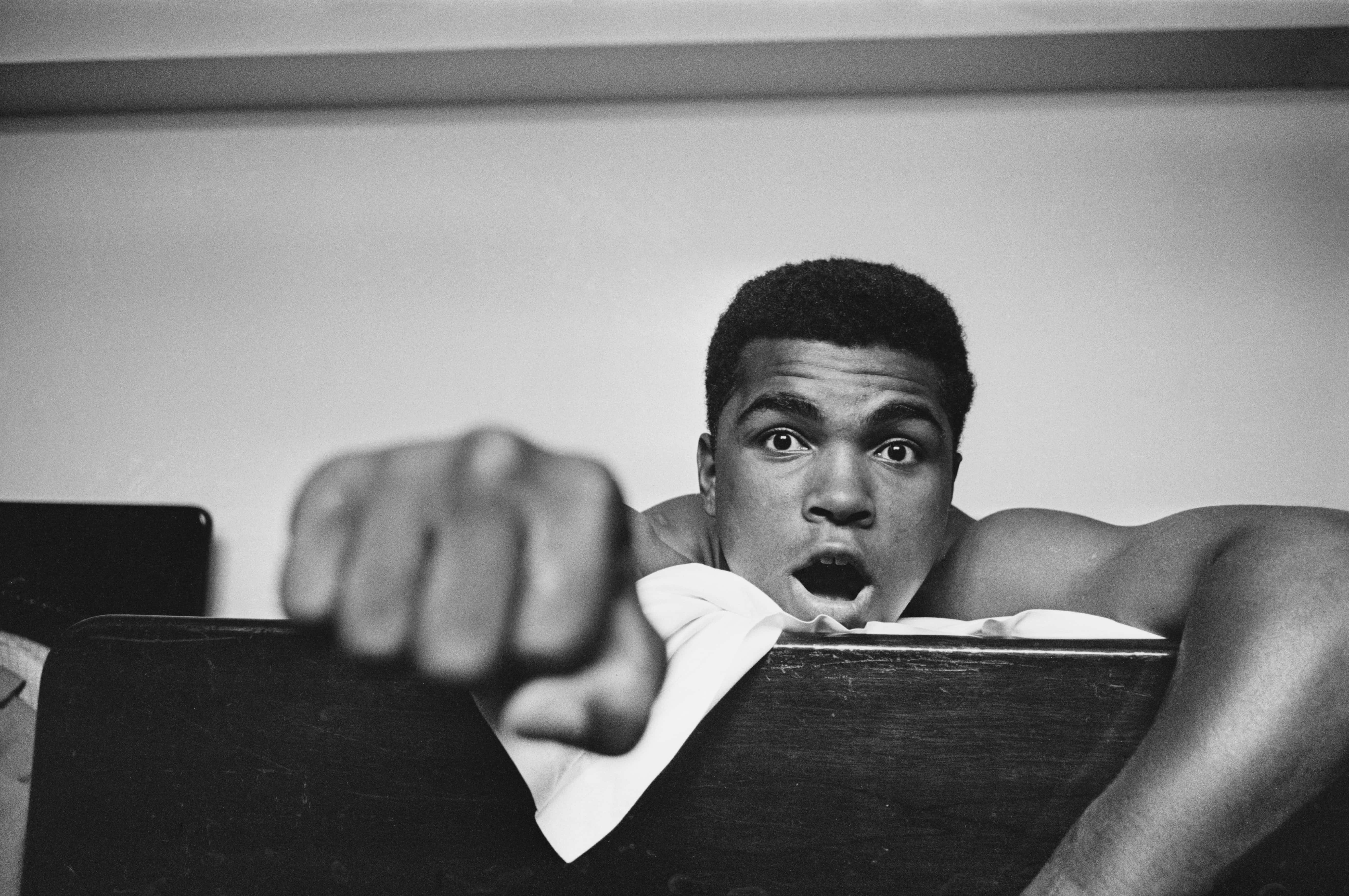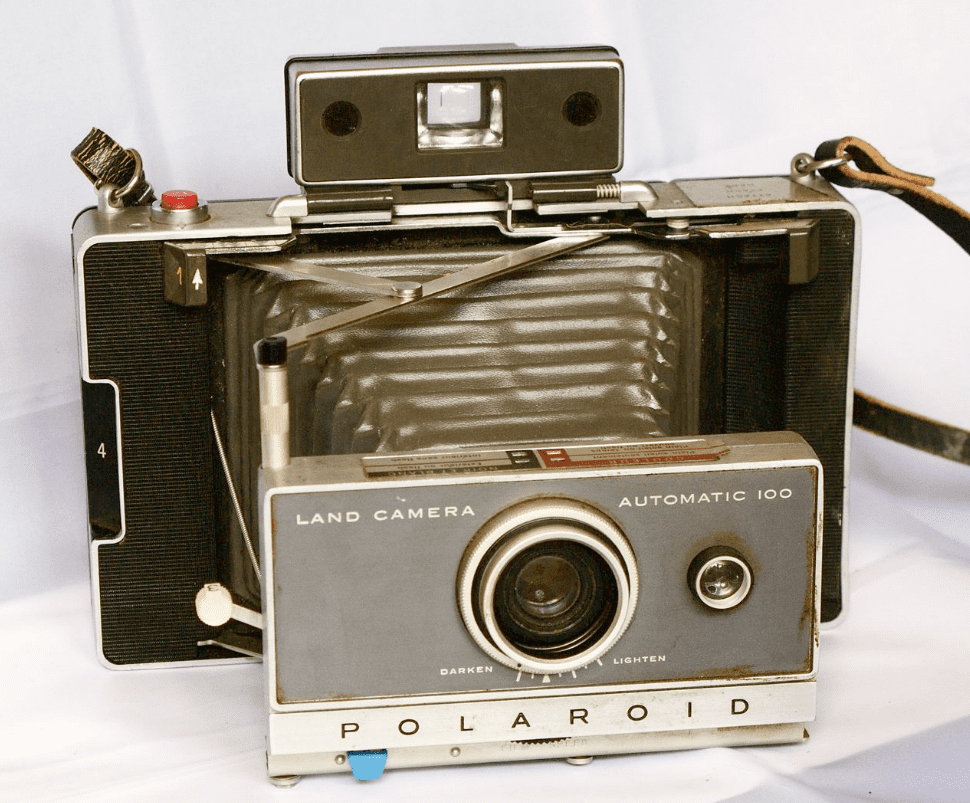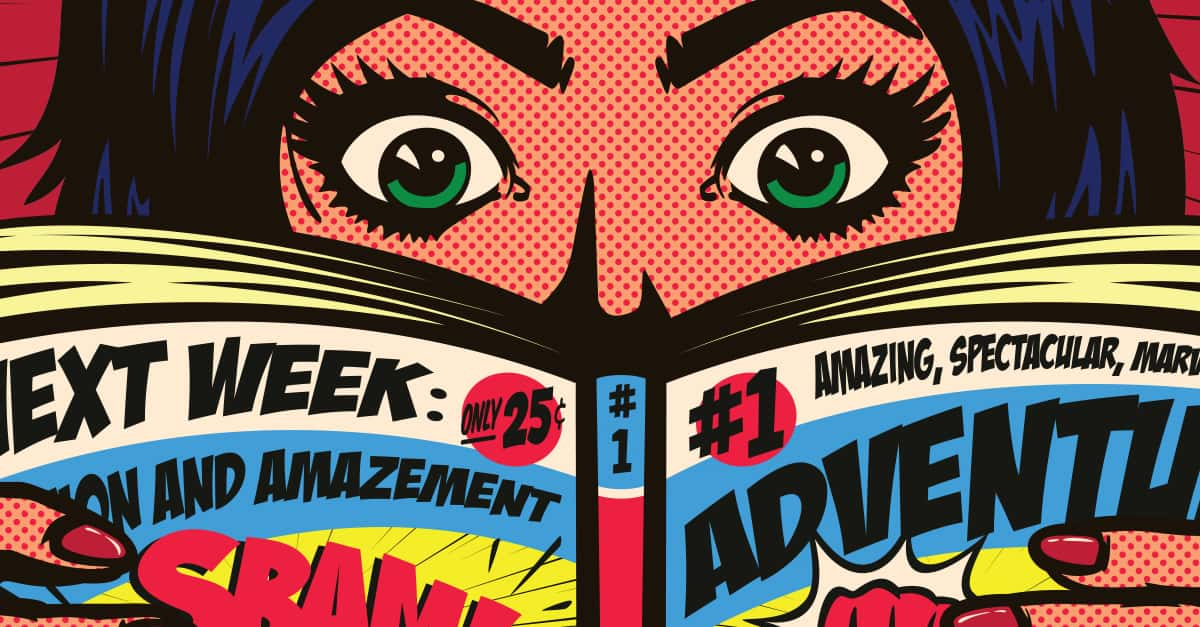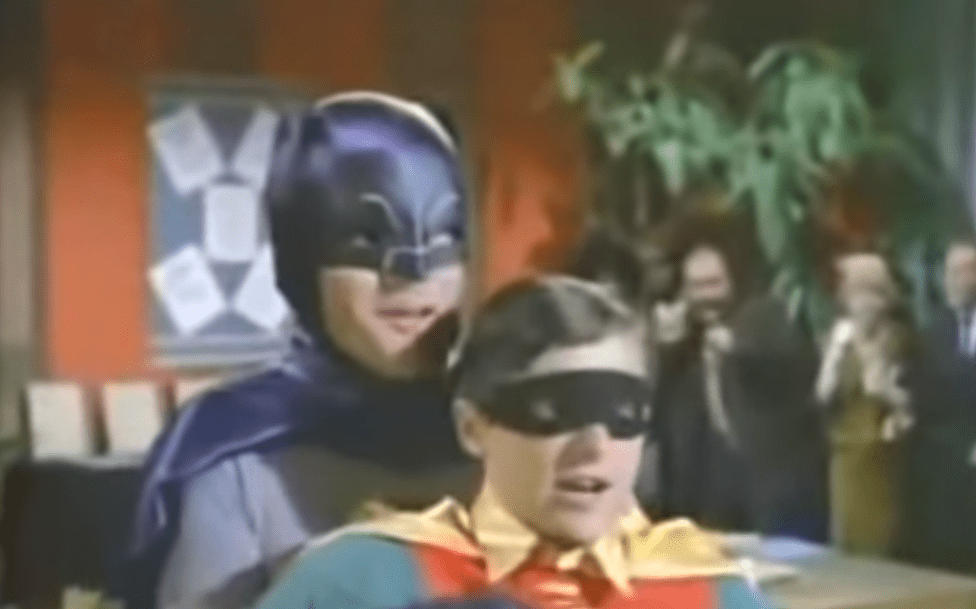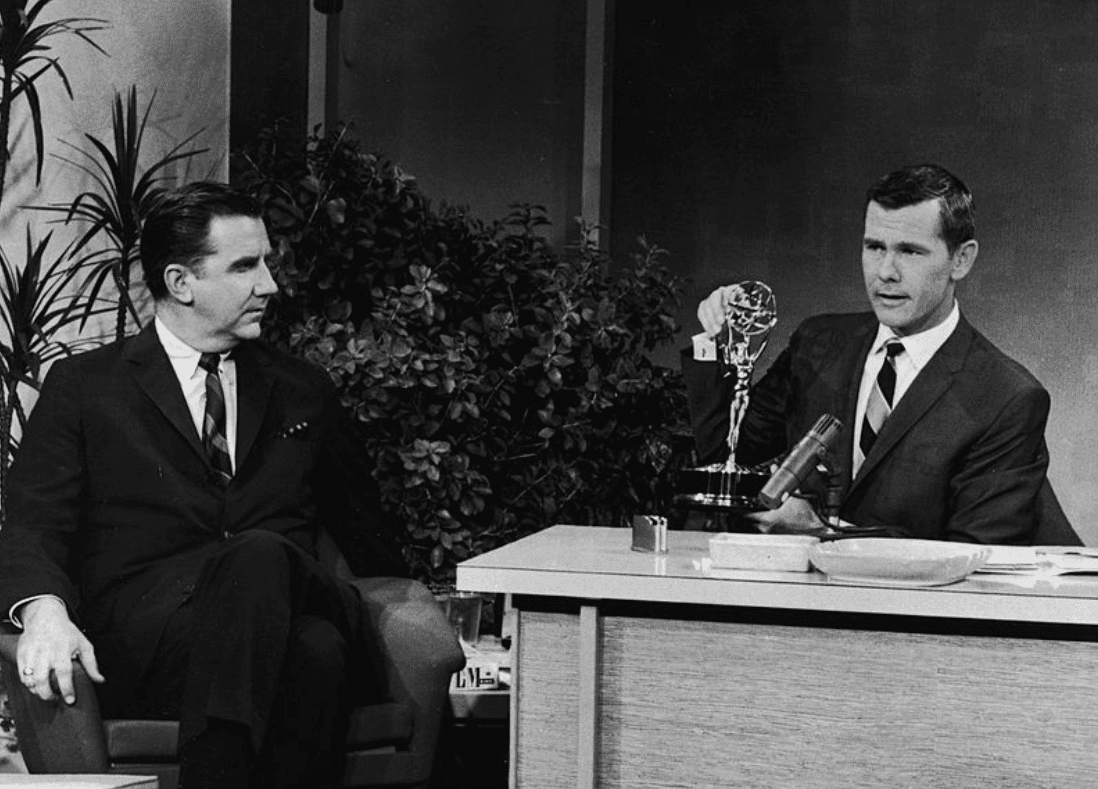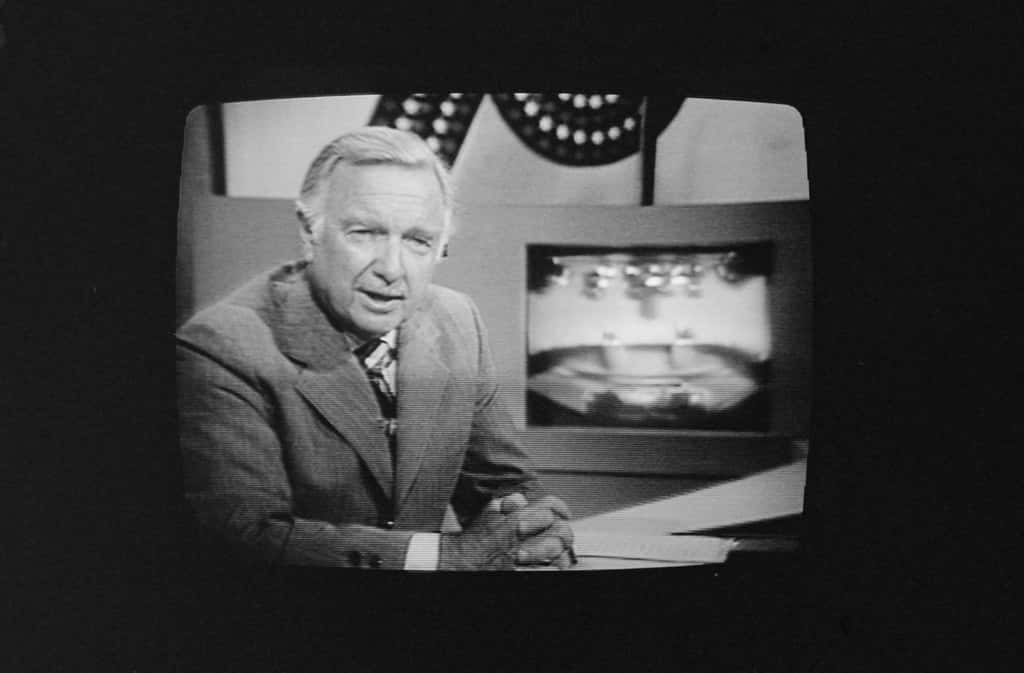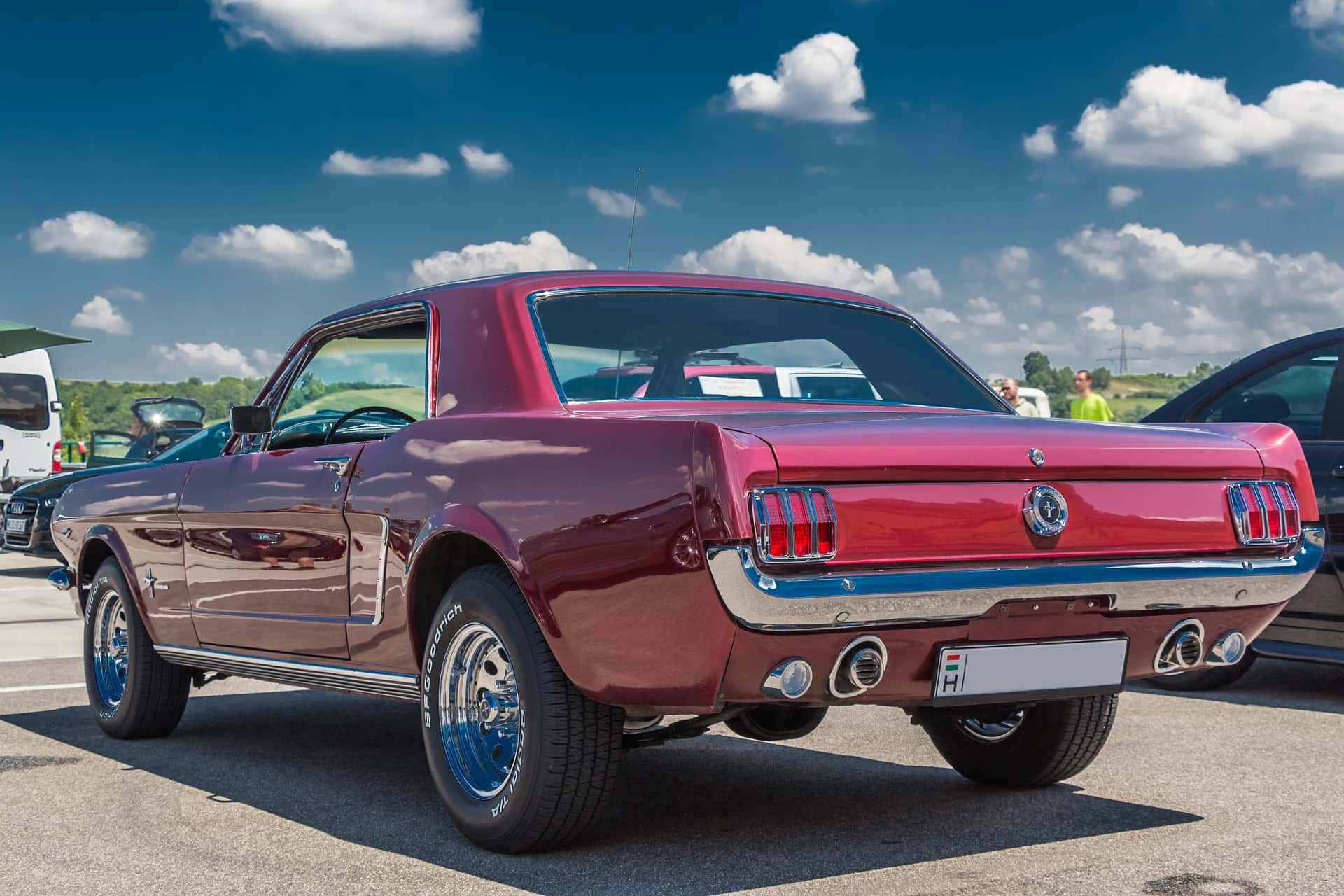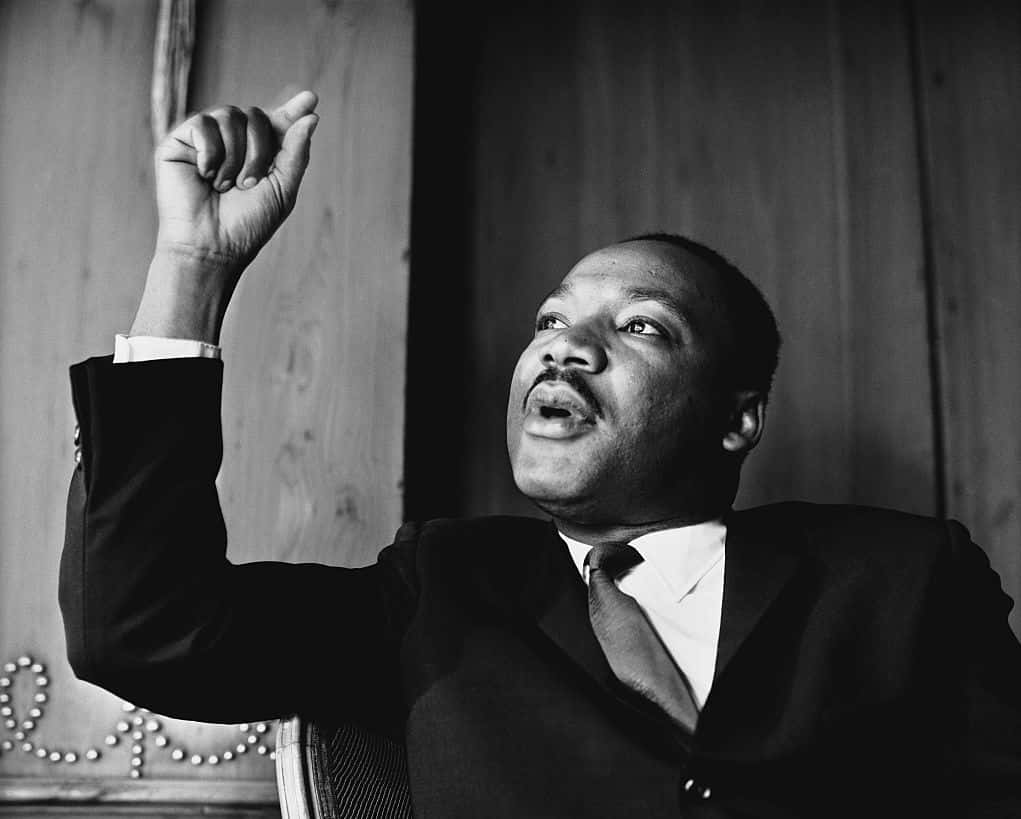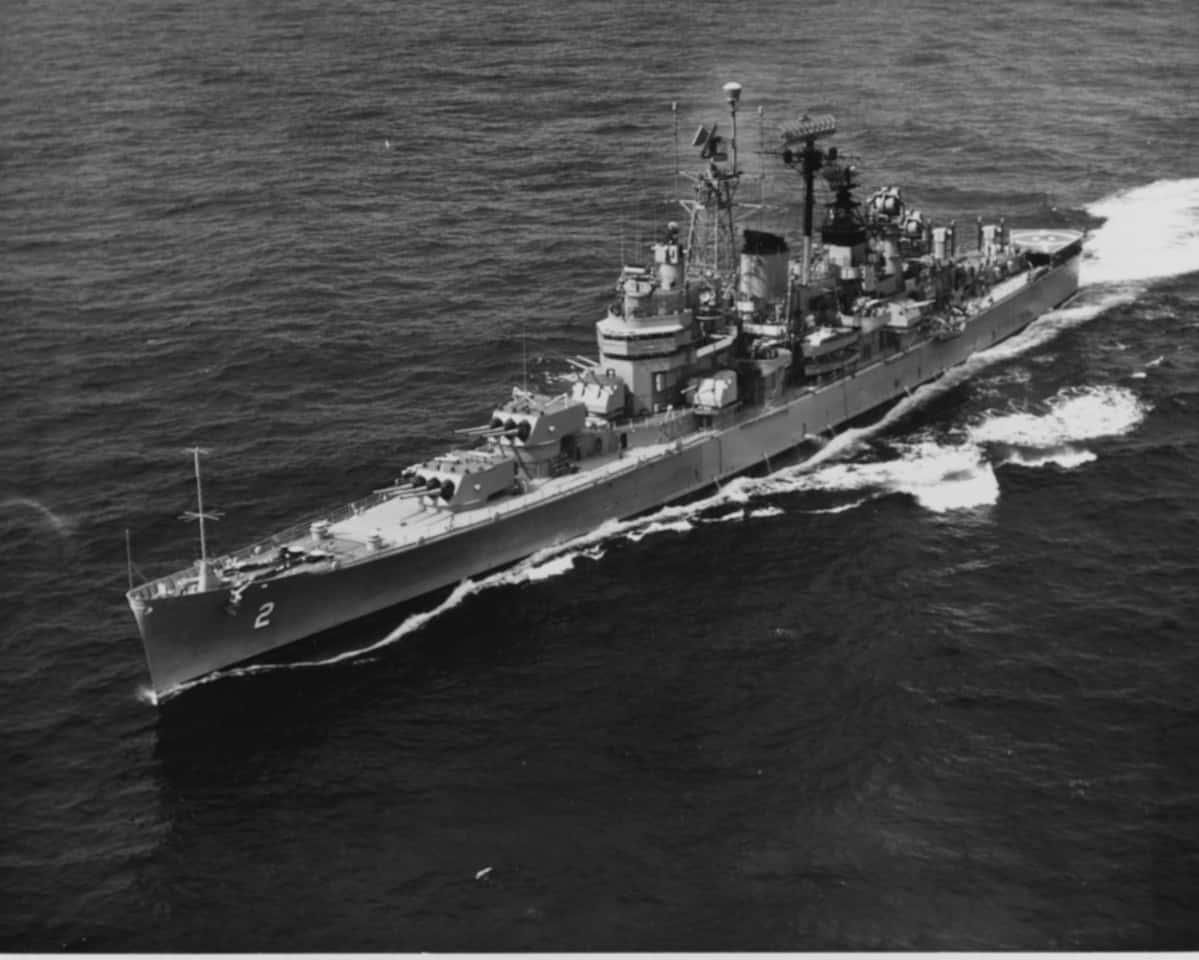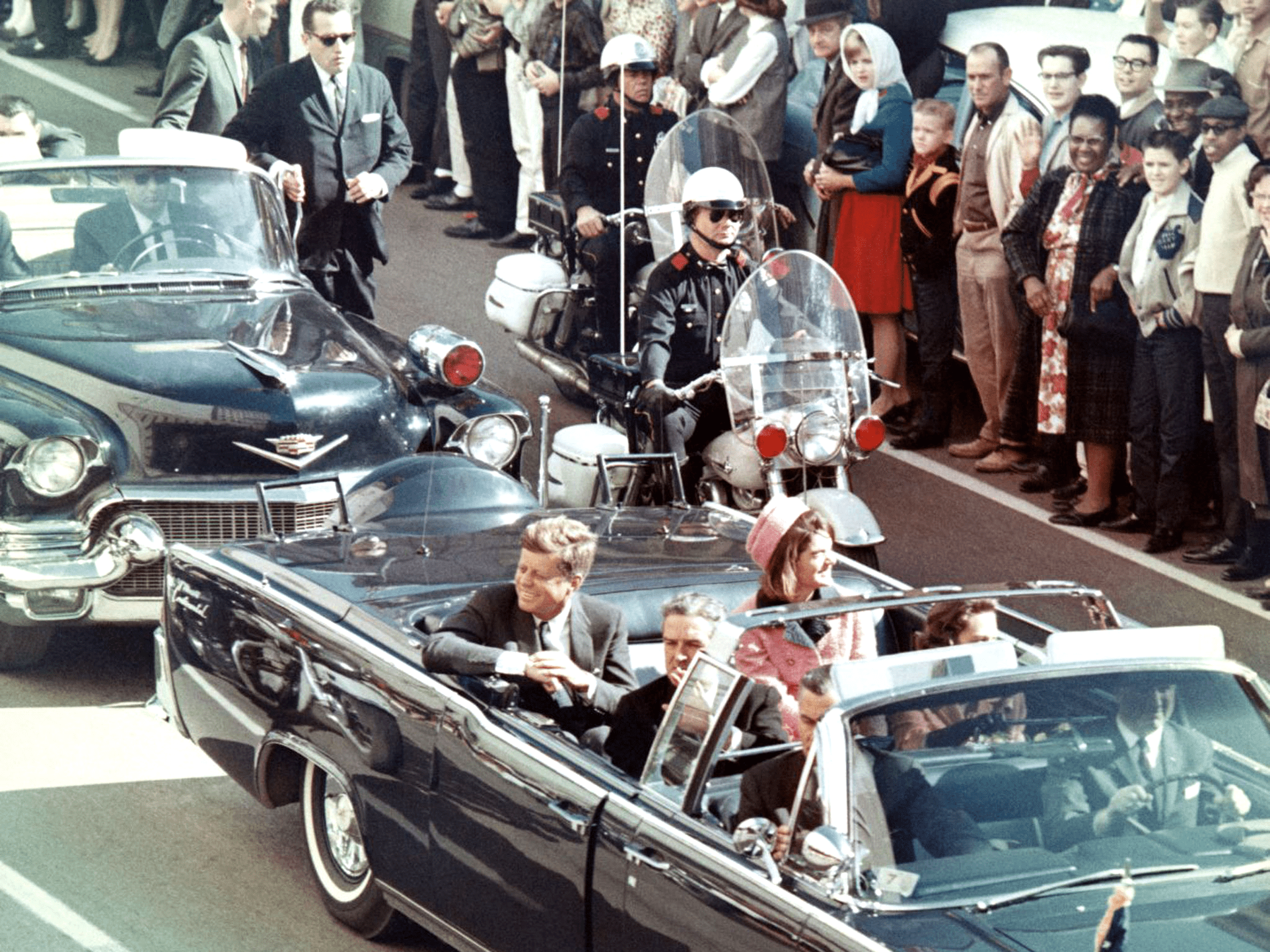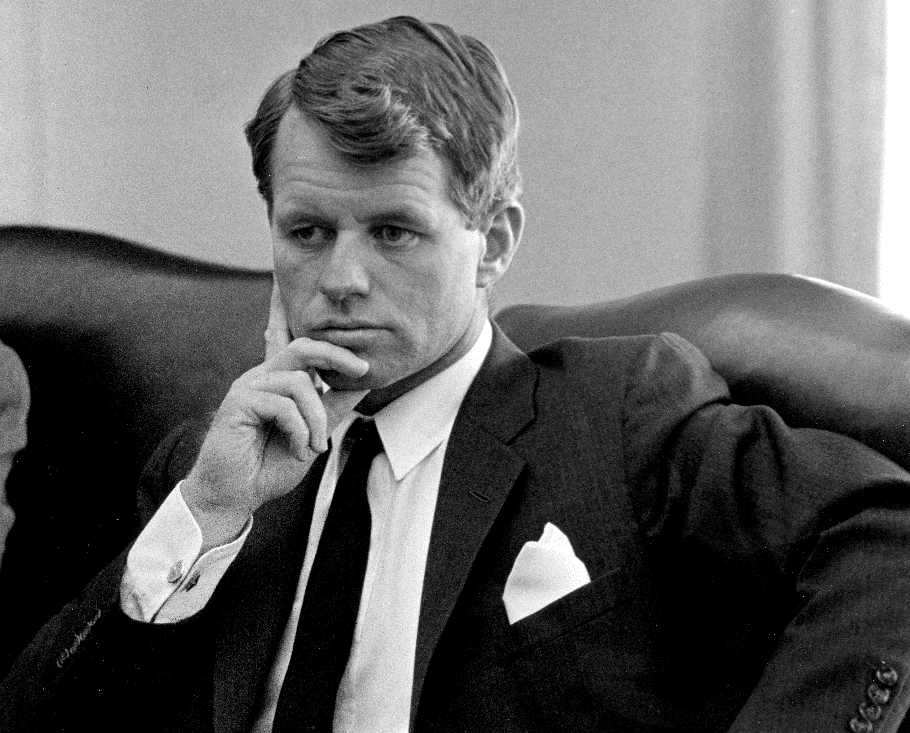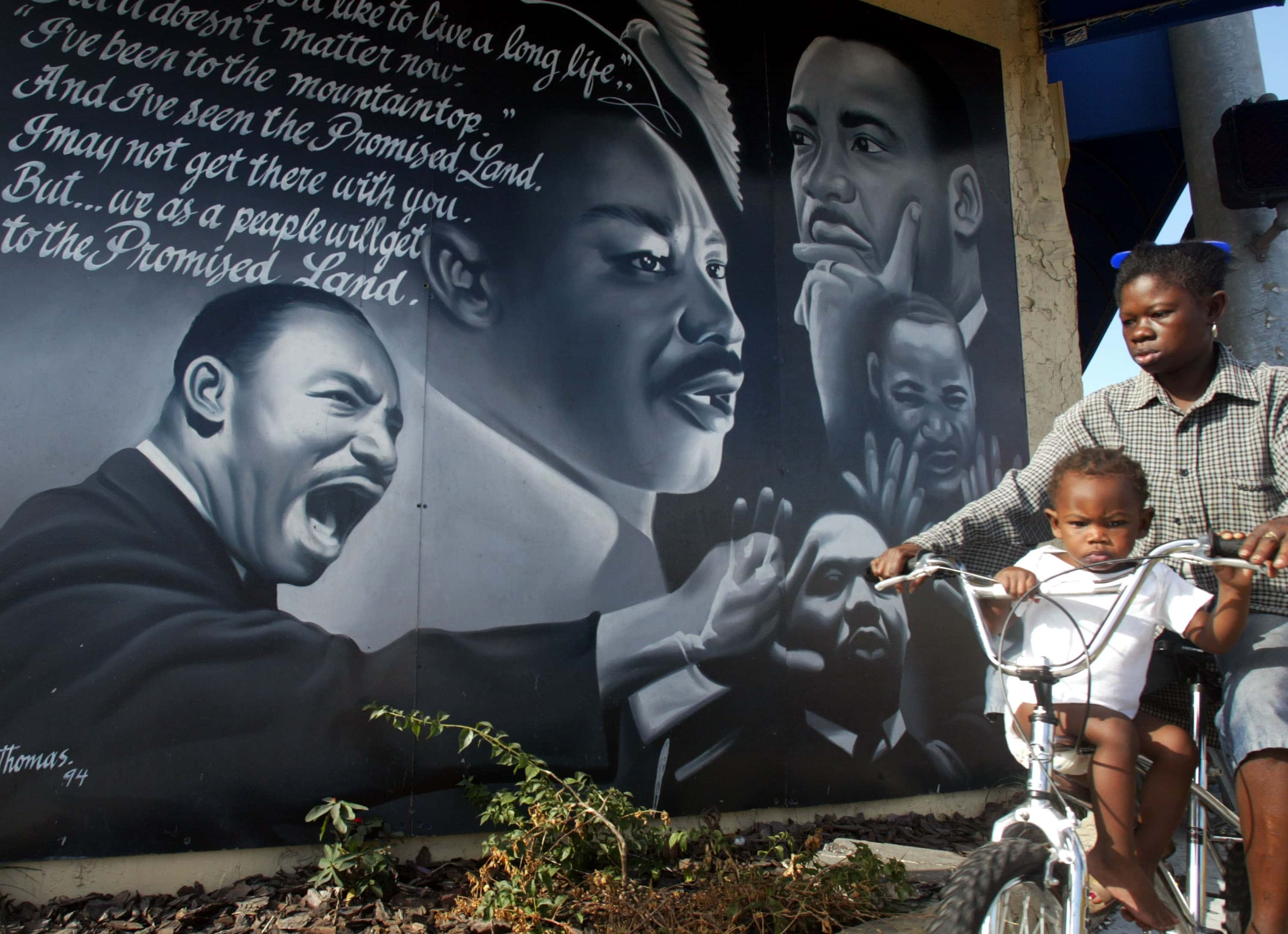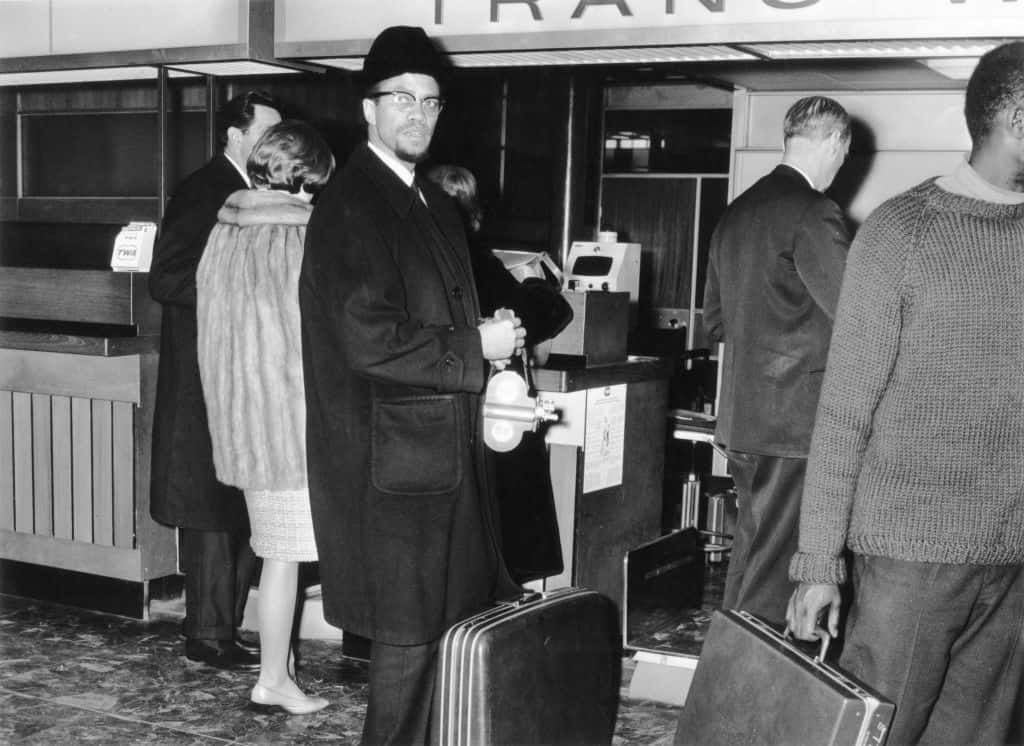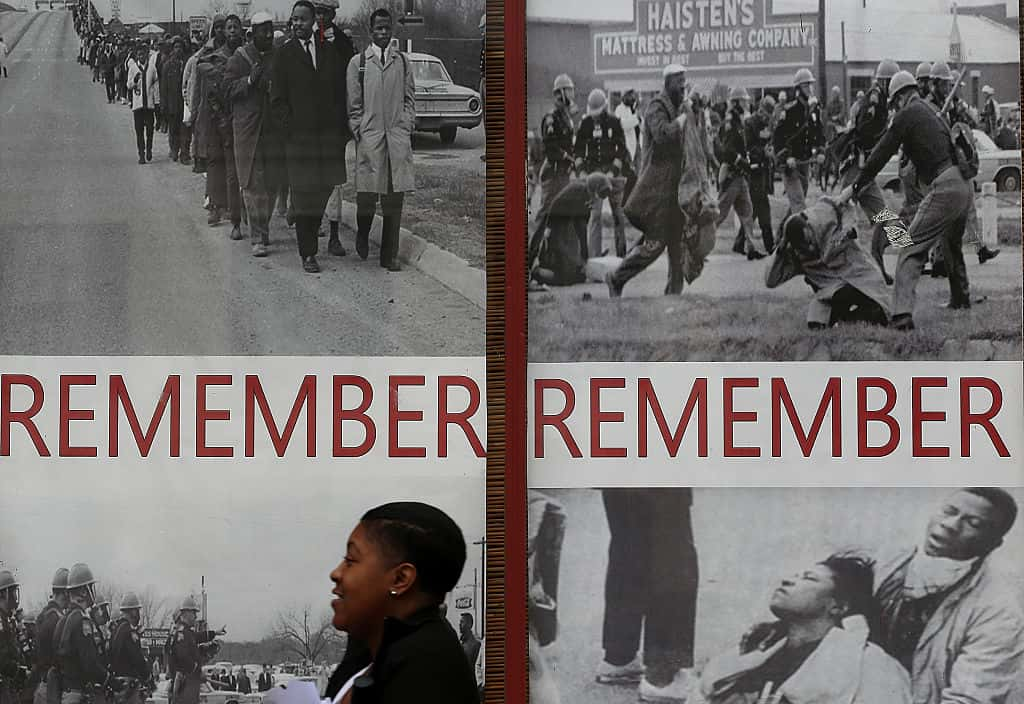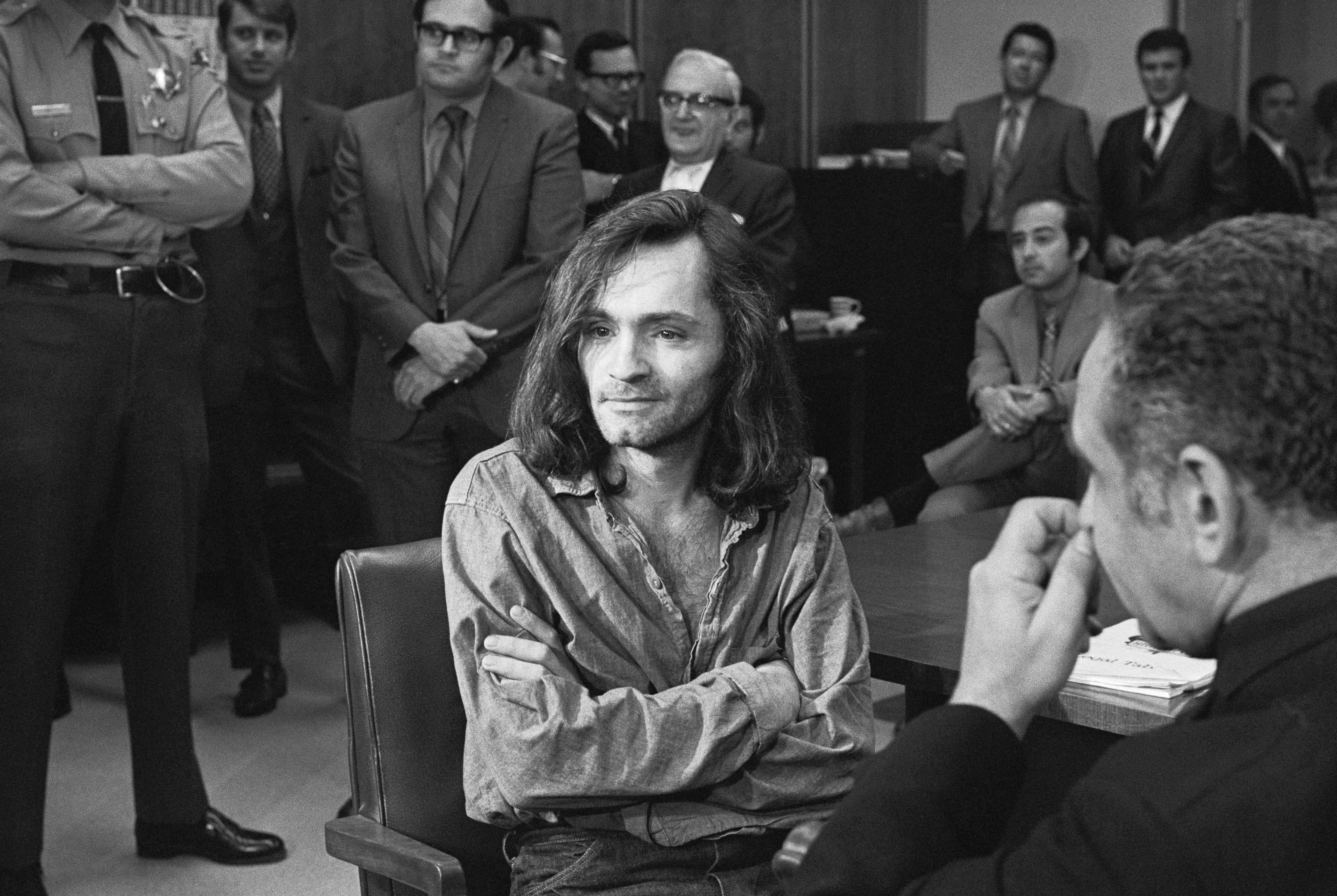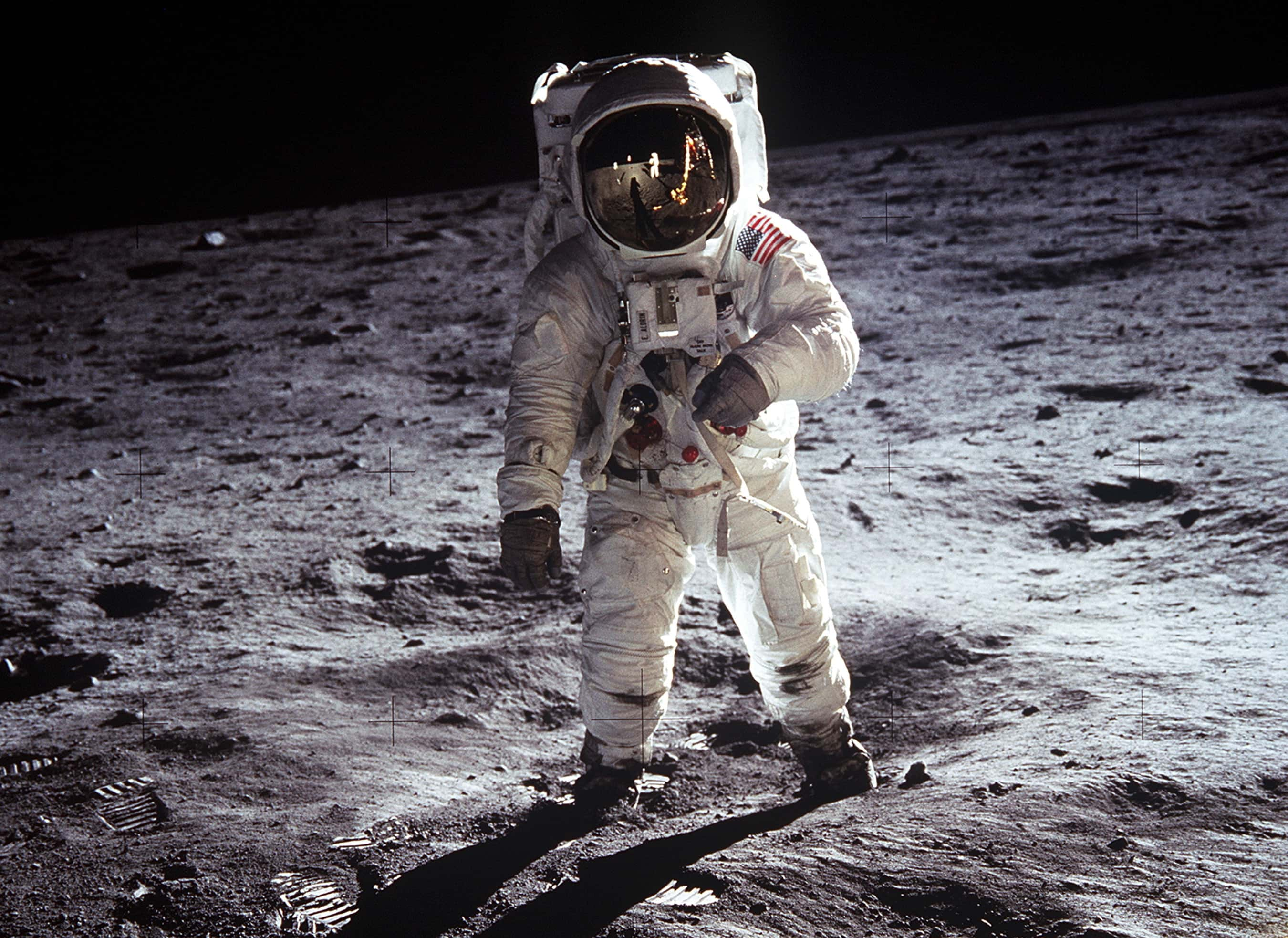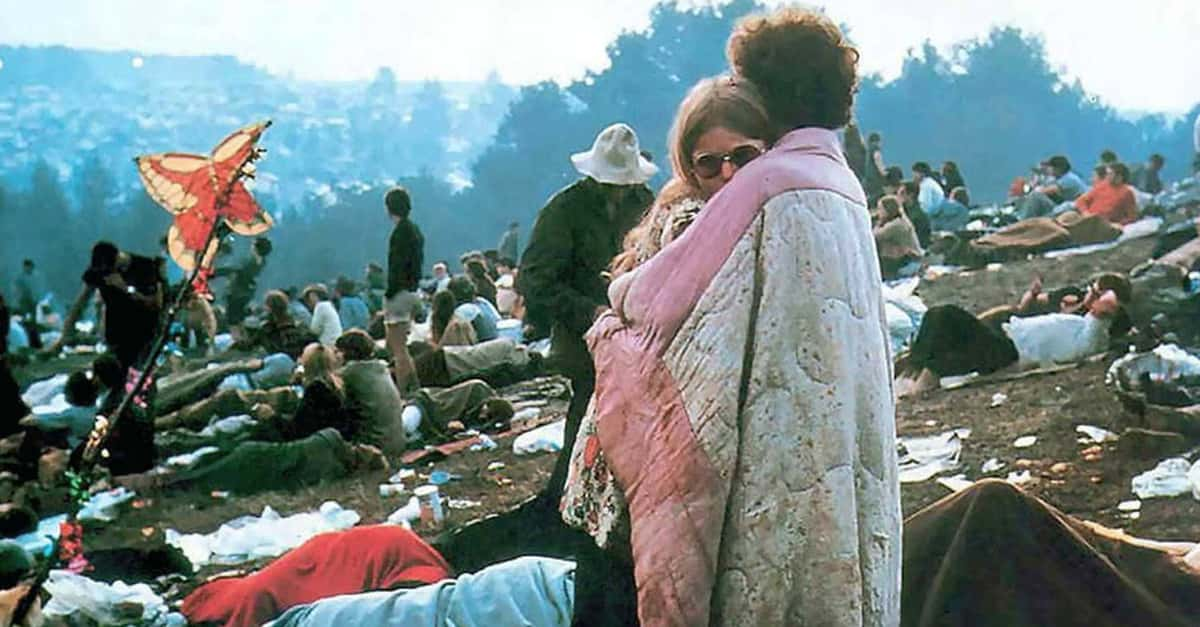“You can’t separate peace from freedom because no one can be at peace unless he has freedom". –Malcolm X
The 1960s were a decade of change in America and around the world. Among countless other groundbreaking events, this period witnessed the tragic demise of many prominent figures, shed light on segregation and inequalities amongst races and classes, and was enveloped in the frenzy of Beatlemania. Keep reading to find out more facts about this free-lovin', violent, radical, and above all else, complicated decade.
45. Building a Wall
On August 13, 1961, the people of Berlin woke up to barbed wire fencing, and just a few days later the concrete construction began. East German leader Walter Ulbricht said of the wall, “We have sealed the cracks in the fabric of our house and closed the holes through which the worst enemies of the German people could creep". No citizens from the East or the West would be allowed to cross the wall even once for another two years.

44. Major Laser
One of the top technological advances of the 20th century was the invention of the laser. Theodore Maiman poured liquid nitrogen into a cooling unit around one of the first experimental lasers, which helped to pave the way for things like fibre-optic communication, CDs, DVDs and sight-restoring surgery.
43. The Greensboro Four
February 1, 1960 saw four African-American college students sit down at an all-white lunch counter in a Woolworth’s in Greensboro, North Carolina. Though the “Greensboro Four” never received service from the staff, it garnered much attention nationwide and sparked more sit-ins in other southern U.S. cities.
42. Segregation in the World
Segregation was a major topic of interest in the 60s, and not just in the United States. Law enforcement officers in Sharpeville, South Africa, used gunfire on a crowd protesting against apartheid—the country's system of segregation. On March 21, 1960, at least 180 black South Africans were injured and 69 others lost their lives.
41. Mandela
The African National Congress, of which Nelson Mandela was the leader, was forced underground in 1960. Mandela and others would use disguises to elude law enforcement. Mandela was condemned to a lifetime of incarceration on June 12, 1964, on four counts of sabotage against the government. He was released 27 years later, and after the end of apartheid Mandela became South Africa’s first black President.
40. Heart to Heart
South Africa had the first human heart transplant on December 3, 1967. Dr. Christiaan Barnard conducted the complex surgery on Louis Washkansky in Cape Town, using the heart from a 25-year-old woman who tragically lost her life in a car accident. Despite Washkansky's body accepting the heart, his vulnerability to illness increased because of his medication, and he succumbed to double pneumonia 18 days post-surgery.
39. Bombings in Birmingham
Three former Ku Klux Klan members were convicted for orchestrating an attack on a predominantly African-American Baptist Church in Birmingham, Alabama. Four young African-American girls lost their lives and at least 14 others were injured during an explosion that occurred during Sunday service on September 15th, 1963. The events are covered the Spike Lee documentary 4 Little Girls.
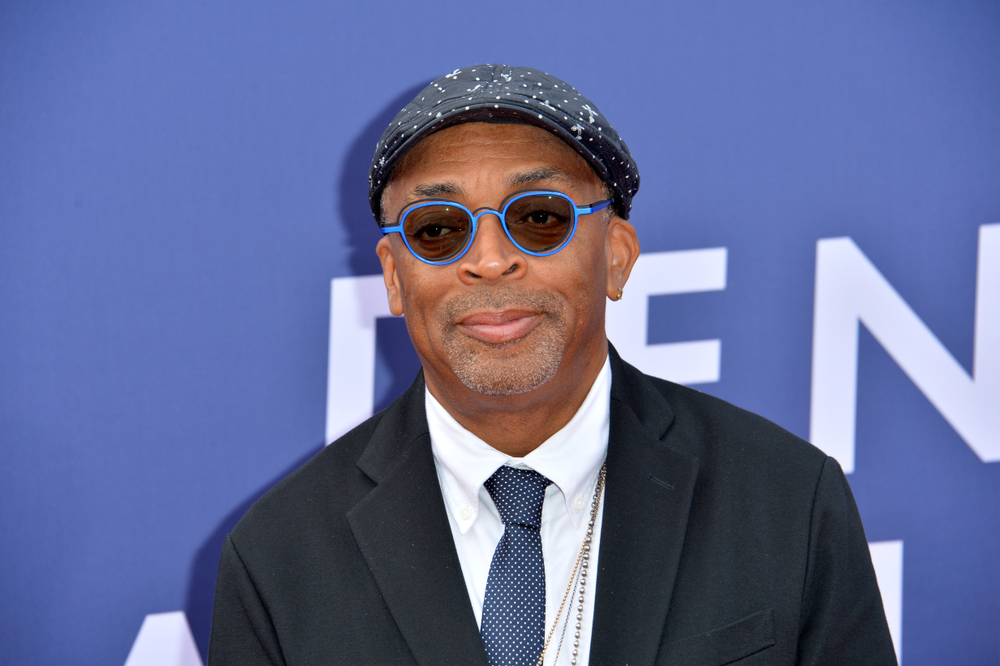 Featureflash Photo Agency, Shutterstock
Featureflash Photo Agency, Shutterstock
38. Justice is Served
On October 2, 1967, Supreme Court Justice Thurgood Marshall took his seat for the first time. He was the first African-American appointed to the Supreme Court.
37. A New President is Elected
John F. Kennedy was elected President of the United States in 1960. Shortly before, the first ever televised Presidential debate took place on September 26th that year, between Kennedy and Richard Nixon, the sitting Vice President.

Sign up to our newsletter.
History’s most fascinating stories and darkest secrets, delivered to your inbox daily. Making distraction rewarding since 2017.
36. Pig Bay
In 1961, the still-young Kennedy government failed in its attempt to aid roughly 1,500 Cuban exiles trigger an uprising against Fidel Castro in what is now known as the Bay of Pigs Invasion. The American-backed invaders were so overwhelmed by Castro’s forces that they surrendered within three days. Castro’s hold on Cuba only grew stronger, and the country’s ties to the Soviet Union became stronger in the aftermath.
35. Cultural Revolution in China
In May, 1966, Chinese leader Mao Zedong launched that country’s Cultural Revolution and enforced communism across the nation. He intended to rid China of old institutions and his political enemies, but it would spin wildly out of control. Massive political purges, severe casualties, and destruction wreaked havoc on the nation before it all ceased a decade later.
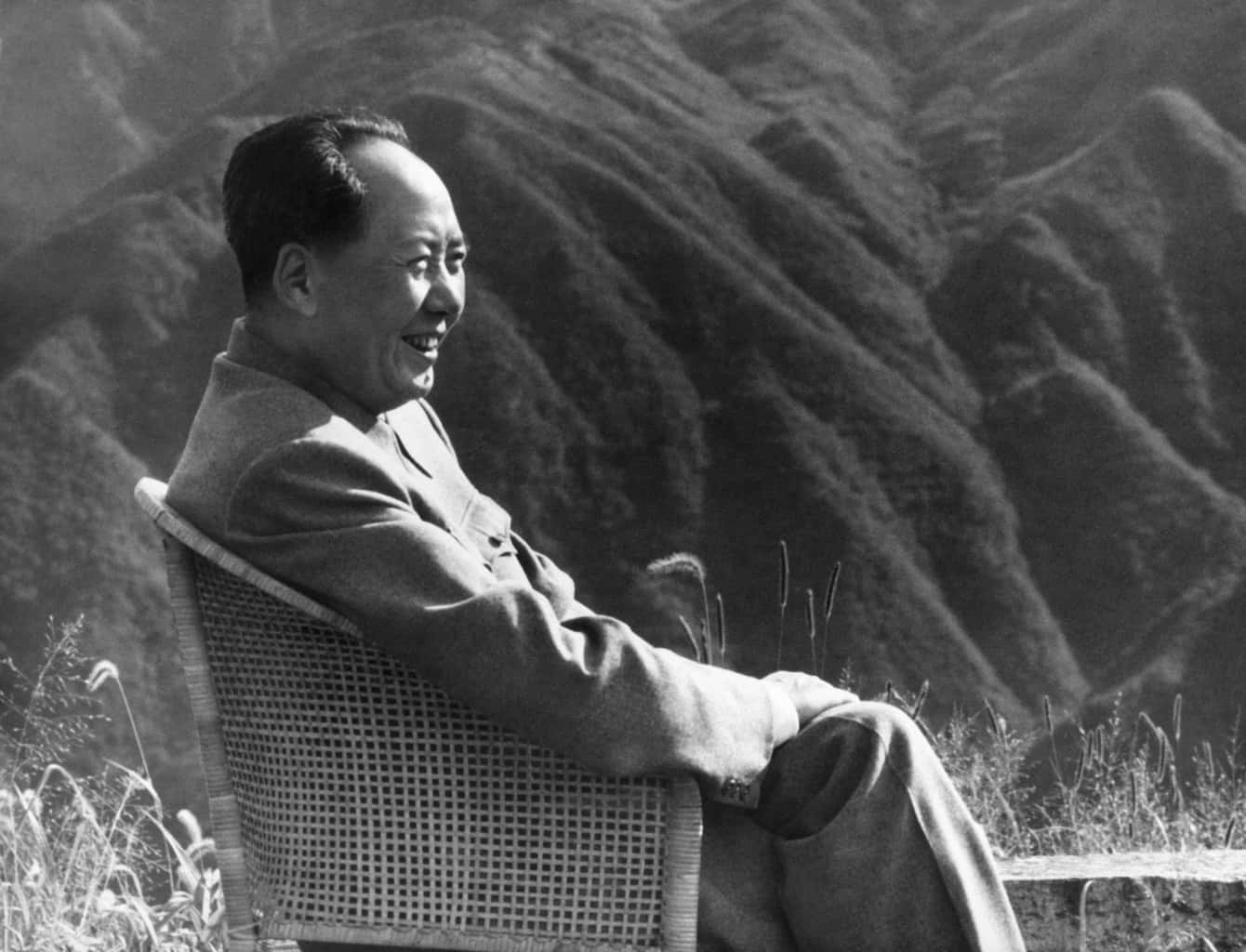
34. The King of Rock N Roll
You may know Elvis Presley for his music, but he also served in the U.S. army for two years. He was promoted to Sergeant in January, 1960, and would receive his full Sergeant stripes a couple weeks later. He was fully discharged on March 5, 1960 and continued on with his musical and film career until 1977, when he drew his last breath.
33. Beatlemania
The Beatles released their debut album, “Please Please Me” in the U.K. in 1963. Beatlemania would hit the U.S. in February, 1964 after the group made their first American appearance on The Ed Sullivan Show. But after just two years of touring, the band became exclusively a studio band, never performing live. One of the biggest reasons for this decision was that the fans at their concerts were so loud that their music could barely be heard. On January 30, 1969, the band would perform together for the last time on the rooftop of the offices of Apple Records on Savile Row in London. They would be broken up by the end of the year.
32. Bond, James Bond
The very first James Bond movie was released in 1962. Dr. No started the franchise with Sean Connery as the first Bond, setting off what became the longest-running and third highest grossing film series of all time.
31.Star's Demise
Numerous conspiracy theories continue to circulate, but renowned actress Marilyn Monroe unfortunately succumbed to a likely drug intoxication at the age of 36.
She was discovered lifeless in her apartment on August 5, 1962. She had been discovered devoid of clothing, face down on her bed with the phone in one hand and empty pill bottles scattered around her. The bottles had been prescribed to her to treat her depression.
30.Passing of a Country Star
Country music star Patsy Cline also unexpectedly departed in 1963.
She, along with three others, tragically lost their lives in a plane crash near Camden, Tennessee, in March of that year. She had been performing at a benefit concert in support of a friend who had tragically succumbed in a car accident. Cline performed alongside another friend of hers, Dottie West, who had begged Cline to drive home and not fly. Cline's plane, which was piloted by her manager Randy Hughes, got caught in an intense rainstorm and crashed, resulting in the demise of all passengers. Many of her fans still visit the site of the crash to this day.
29. Woodstock
Roughly 400,000 thousand music lovers flocked to Bethel, New York for the Woodstock Music & Art Fair in August, 1969. Among the performers were Jimi Hendrix, The Who, The Band, Janis Joplin, Johnny Winter, Creedence Clearwater Revival, Jefferson Airplane, Joan Baez, Santana, Joe Cocker, and Crosby, Stills, Nash, and Young. But, if you had wanted to pick up any official merchandise while taking in the music, you were out of luck. Nothing was sold, and the only thing concertgoers could really get were programs or bootleg items. Oh, and the best part? The whole event was free. Although organizers did sell tickets, a late change in venue meant that trying to check everyone's ticket would be next to impossible, so they just let in anyone who showed up.
28. Drug of Choice
The substance commonly associated with the 60s was recognized by the U.S. Food and Drug Administration as an experimental drug in 1962.
Timothy Leary, a Harvard psychologist, supported the use of this psychoactive drug and popularized the phrase "turn on, tune in, drop out". American researchers highlighted that this substance can cause entire groups, inclusive of armed forces personnel, to become unaware of their surroundings and situations, disrupt their plans and judgement, and even induce fear, unmanageable confusion and terror. The U.S. government would ban the drug in 1967.
27. The Pill
Birth control was given the go-ahead by the U.S. FDA in 1960. Enovid was the first birth control pill created for women. Some 400,000 women talked to their doctors about getting the pill in the first year alone, despite the cost being equivalent to $80 in 2015. In 1963, the price for the pill dropped, and the number of women who went to their doctor for it rose to an astounding 2.3 million.
26. The Women’s Movement
Helen Gurley Brown, an editor at Cosmopolitan magazine, incited key societal transformations with her groundbreaking book in 1962. The concept that women could indeed balance everything—a successful career and a satisfying romantic life—became popularized as a result. The next year, Betty Friedan would she release her book, The Feminine Mystique, and spark the beginning of Second-Wave Feminism.
25. End of an Era
The Toronto Maple Leafs would win four Stanley Cups in six years in the 1960s. The team won in 1962, 1963, 1964, and in 1967. Much of the team that final year despised their general manager, Punch Imlach, but team captain George Armstrong famously rallied the men during a meeting on January 30, 1967, convincing them to ignore the animosity that had built up towards Imlach and play to win. They made it to the finals, and with the legendary Johnny Bower in net, the Leafs would take the Cup at home against Montreal. The Leafs haven't made it to a Cup Final since, the longest drought in the NHL.
24. Let’s Go to the Tapes!
We may take instant-replay for granted these days, but back in 1963 it was a brand new thing. CBS used it for the first time during the Army-Navy football game on December 7 that year at Philadelphia’s Municipal Stadium.
23. The First Super Bowl
The Super Bowl is one of the biggest television events in the world, year in and year out, but it hasn't been around forever. The very first Super Bowl took place on January 15, 1967 in Los Angeles, and saw the Green Bay Packers defeat the Kansas City Chiefs 35-10.
22. A Fighter is Born
A 22-year-old Cassius Clay arrived on the world stage by upsetting Sonny Liston during a boxing heavyweight title fight on February 25, 1964 in Miami Beach, Florida. Sometime later, Clay would convert to Islam and change his name to what we know him as today—Muhammad Ali.
21. Spacewar!
Widely regarded as the first interactive video game, “Spacewar”! was created in 1962. Three students from the Massachusetts Institute of Technology are credited with the invention of the game, which sees two players firing at each other’s spaceships with an early version of the joystick.
 Wikimedia Commons
Wikimedia Commons
20. Can You Hear Me Now?
Long before there were cell phones, there was such a thing as push-button phones. The first were made available in late 1963 to AT&T customers, and even included extension buttons on the bottom for use in offices! Up until that point, the majority of telephones were rotary-based. Kudos if you even know what that means!
19. Surfing the ARPANET
The early Internet was born in 1969 with the creation of ARPANET. Many leading universities combined their forces to create a way to connect and link computers to each other. With funding from the U.S. Defense Department, ARPANET had terminals at UCLA, Stanford, UC Santa Barbara and the University of Utah.
18. In Living Color
The Polaroid Corporation debuted its instant-color film in 1963. Polaroid also unveiled its Model 100 Land Camera.
It would be the first camera ever to employ a transistorized electronic shutter for completely automatic exposure control. Just two years later, a new style of camera would be released, becoming a massive hit among the younger generation.
17. Spiderman, Spiderman, Does Whatever a Spider Can
Spiderman made his debut in 1962, when he appeared in the No. 15 issue of the “Amazing Fantasy” comic series. This issue is arguably one of the most valuable comic books of all time.
16. Remember the Batusi?
Batman, the campy television series starring Adam West as our hero and Burt Ward as Robin, debuted in 1966. The TV sensation would only last for three seasons.
15. Heeeeere's Johnny
Johnny Carson and Ed McMahon took over The Tonight Show in 1962. They would have an amazing 30 year run, helping shape the modern comedy landscape, before Jay Leno took over for another 22 seasons, with Jimmy Fallon eventually taking the reins from there.
14. New Ways to Get the News
Walter Cronkite anchored the first nightly televised half-hour news program when CBS Evening News with Walter Cronkite debuted in 1963. 60 Minutes also made its debut five years later, on September 24, 1968. Harry Reasoner and Mike Wallace co-anchored the Sunday night news magazine.
13. American Muscle
Back in the mid-60s, you could buy a brand new Ford Mustang for $2,400. The car debuted at the 1964 World’s Fair in New York, showcasing standard equipment that included carpet, bucket seats and a 170-cubic-inch six-cylinder engine.
12. Commercialized Air Travel Becomes a Thing
Just two months after its debut, the Boeing 727 jet would take its first flight in February, 1963. The aircraft is considered to be a major factor in allowing domestic travel for millions of everyday Americans, something that would have been unheard of only a short time earlier.
11. I Have a Dream
Reverend Martin Luther King Jr. delivered his famous “I Have a Dream” speech on August 28, 1963, on the steps of the Lincoln Memorial during the March on Washington for Jobs and Freedom. It is considered to be one of the most important speeches in American history, and its effects would be felt in the Civil Rights Act the following year.
10. Crisis in Cuba
In 1962, the United States detected the presence of Soviet nuclear armaments on Cuba. During a televised address to his people, Kennedy announced the strategic blockade of the island, warning the Soviet Union that any further attempts to ship missiles into Cuba would result in seizures of the product. After a tense standoff, an agreement was reached where the Soviets would withdraw their armaments from Cuba. For their end of the deal, the US agreed to never invade the island nation, but most people don’t know that they also secretly agreed to dismantle their own missiles that were stationed in Turkey.
9.Dallas Tragedy
Kennedy met his untimely demise in Dallas, Texas on November 22, 1963.
The President had been riding with his wife Jacqueline, Texas Governor John Connally, and his wife, Nellie, when he was fatally shot by Lee Harvey Oswald. Days later, Oswald would be shot by Jack Ruby before he could face trial for the alleged lethal act. Just as with Monroe's departure from life in 1962, there are numerous conspiracy theories surrounding the individuals responsible for Kennedy's demise, including the CIA, the Mafia, Vice President Lyndon B. Johnson, Cuban President Fidel Castro, the KGB, or a combination of them.
8. Runs in the Family
Kennedy's brother, Senator Robert F. Kennedy, also met with a tragic and violent end. Sirhan Sirhan was found guilty for causing his demise, which occurred just after midnight on June 5, 1968 in Los Angeles. Sirhan also wounded five others at the former Ambassador Hotel. Robert had just won the California presidential primaries that night. Just like his brother, various conspiracy theories surrounded the end of Robert's life, including CIA involvement or the possibility of a second shooter.
7.End of a Dream
King Jr. tragically lost his life on April 4, 1968 in Memphis, Tennessee. He had been there in support of striking sanitation workers. James Earl Ray, who had escaped from the Missouri State Penitentiary, was apprehended at London's Heathrow Airport only two months later and extradited back to the U.S., where he was accused of committing the fatal act. Ray admitted his guilt in 1969 and was given a sentence of 99 years. His life ended while serving his sentence in 1998. There are also many conspiracy theories enveloping King Jr'.s untimely exit from life.
6. Knew it was Coming
Malcolm X, the iconic and controversial civil rights activist, tragically lost his life on February 21, 1965 at the Audubon Ballroom in New York. Just two days before, he had informed journalist Gordon Parks that the Nation of Islam was actively attempting to end his life. The autopsy confirmed 21 instances of projectile damage to the chest, left shoulder, arms, and legs. In 1966, three individuals, all members of the Nation of Islam, were declared guilty of the deadly act and were given life sentences. And, as you might have anticipated, there are conspiracy theories related to Malcolm X's demise as well.
5. Bloody Sunday
Just a few weeks later, the day known as “Bloody Sunday” took place in Selma, Alabama. On March 7, 1965, State troopers violently broke up a a group of demonstrators marching from Selma to Montgomery to protest for their right to vote.Images from the turmoil startled the nation, and this day would facilitate the passage of the Voting Rights Act on August 6. The legislation was enacted to help protect minorities who had previously encountered barriers that prevented them from voting.
4. Bloodshed in Vietnam
The U.S. involvement in the Vietnam Conflict was extremely polarizing amongst the country’s citizens, with anti-conflict sentiment widespread across the nation. One of the more disheartening moments for U. S. forces occurred on March 16, 1968, when the Americans set homes ablaze in the secluded hamlet of My Lai in South Vietnam. Hundreds of unarmed civilians lost their lives. Of the 26 Americans involved in the violent incident, only one was convicted, ending up with a sentence of merely three years under house arrest.
3. Manson Family Values
Charles Manson, the cult leader who provoked a group of his followers to end the lives of five people, faced charges of such grave offences in court on December 5, 1969. The brutal slayings took place between August 8 and 9 of that year at the Los Angeles home of film director Roman Polanski. Among the five victims was Polanski’s pregnant wife, actress Sharon Tate.
2. Over the Moon
You can’t talk about the sixties and not bring up the moon landing. On July 20, 1969, Apollo 11 astronaut Edwin E. “Buzz” Aldrin Jr. planted the American flag on the moon, and he, along with mission commander Neil Armstrong, would become the first humans to walk on the moon. Kennedy had a goal of landing on the moon and ensuring the crew's safe return prior to the end of his presidency. The event was one of the most watched television events in history, and also marked an important victory for the Americans in the Cold Conflict and space race. For a little perspective, the first time human beings had ever managed powered flight was in 1903. We had landed on the moon less than seventy years later. The 1960s went out with maybe the single greatest example of human innovation and ingenuity.
1. Revolution?
Though now perceived as a symbol of the revolution in personal freedom, female birth control, known as "the pill", initially gained popularity for starkly different reasons. Doctors actually prescribed and distributed the pill as a form of population control to counter poverty in the country.
This originated from President Lyndon Johnson's social reform policy, referred to as The Great Society, which was established to decrease poverty and societal inequity based on ethnicity.
So we can maybe thank politics for the existence of the pill!
Sources: 1, 2, 3, 4, 5, 6, 7, 8, 9, 10, 11, 12, 13, 14, 15, 16, 17, 18, 19, 20, 21, 22, 23, 24, 25, 26, 27, 28


